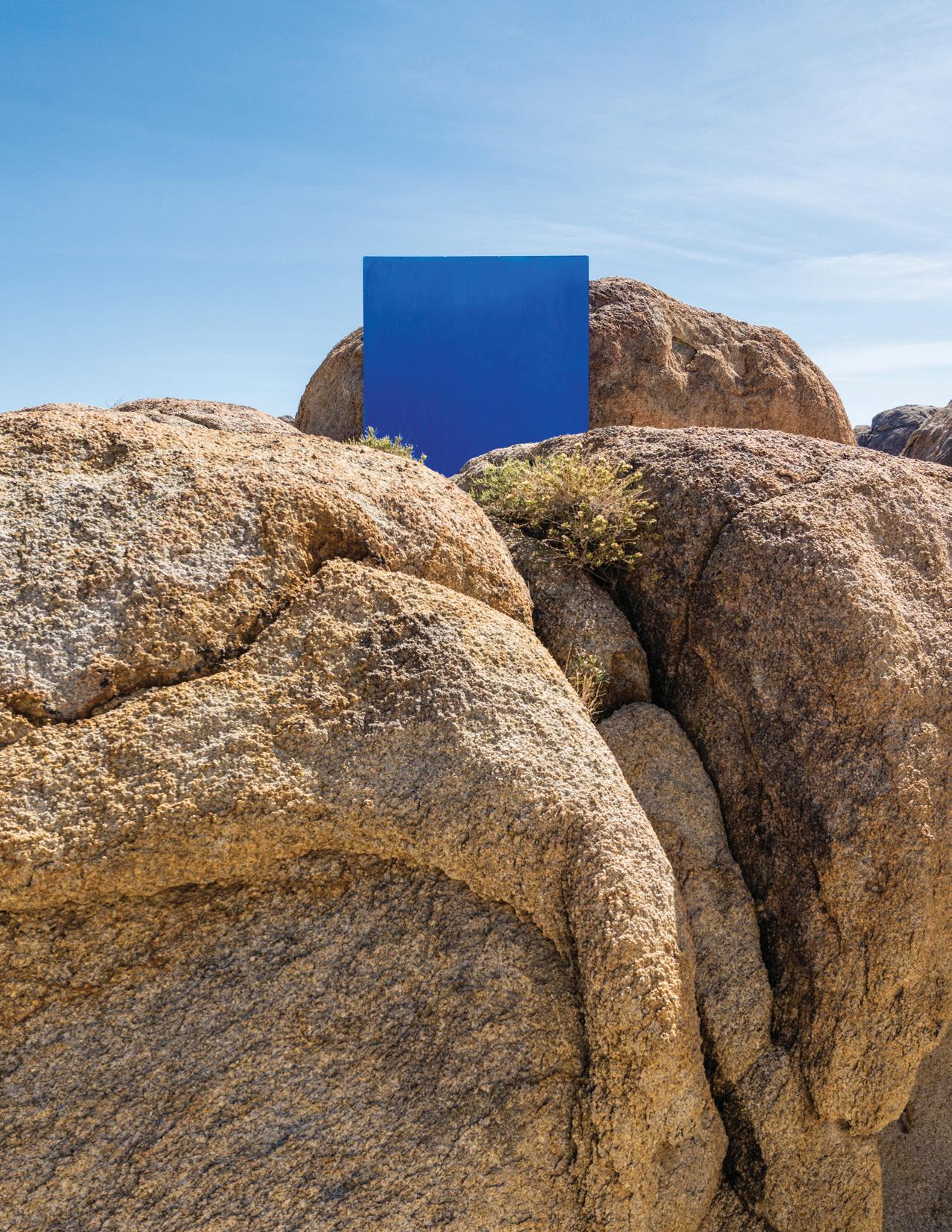




COLLEGE OF THE ATLANTIC MAGAZINE
Editorial EDITOR
Daniel Mahoney
EXECUTIVE EDITOR
Rob Levin
COPY EDITOR
Caitlin Meredith
EDITORIAL ADVICE
John Anderson Dru Colbert
Darron Collins ’92
Jennifer Hughes
Suzanne Morse
Chris Petersen
EDITORIAL CONSULTANT
Jodi Baker
DESIGN
Corey Blake
Z Studio Design
Administration
PRESIDENT Darron Collins ’92
PROVOST
Ken Hill
ASSOCIATE ACADEMIC DEANS
Jamie McKown
Bonnie Tai
DEAN OF ADMISSION
Heather Albert-Knopp ’99
DEAN OF INSTITUTIONAL ADVANCEMENT
Shawn Keeley ’00
DEAN OF ADMINISTRATION
Bear Paul
DEAN OF STUDENT LIFE
Joshua Luce
DIRECTOR OF COMMUNICATIONS
Rob Levin
Board of Trustees
TRUSTEE OFFICERS
Beth Gardiner, Chair
Marthann Samek, Vice Chair
Hank Schmelzer, Vice Chair
Ronald E. Beard, Secretary
Barclay Corbus, Treasurer
TRUSTEE MEMBERS
Cynthia Baker
Timothy Bass
Michael Boland ’94
Joyce Cacho
Alyne Cistone
Barclay Corbus
Sarah Currie-Halpern
Heather Richards Evans
Marie Griffith
Cookie Horner
Nicholas Lapham
Casey Mallinckrodt
Anthony Mazlish
Chandreyee Mitra ’01
Roland Reynolds
Nadia Rosenthal
Laura McGiffert Slover
Laura Z. Stone
Steve Sullens
Claudia Turnbull
LIFE TRUSTEES
Samuel M. Hamill, Jr.
John N. Kelly
William V.P. Newlin
TRUSTEES EMERITI
David Hackett Fischer
William G. Foulke, Jr.
Amy Yeager Geier
George B.E. Hambleton
Elizabeth D. Hodder
Philip B. Kunhardt III ’77

Jay McNally ’84
Philip S.J. Moriarty
Phyllis Anina Moriarty
Cathy Ramsdell
Hamilton Robinson, Jr.
William N. Thorndike
John Wilmerding
EX OFFICIO
Darron Collins ’92
At College of the Atlantic, we envision a world where creativity, presentness, compassion, respect, and diversity of nature and human cultures are highly valued. A world where all people have the opportunity to construct meaningful lives for themselves, gain appreciation of the relationships among all forms of life, and safeguard the heritage of future generations.
COA Magazine is published annually for the College of the Atlantic community.

I’MCURIOUS about your thoughts on the cover of this magazine. I can’t get enough of it. Blakeney is a fellow COA alum and I’m therefore wildly biased. But, irrespective of the affiliation of the artist, I find it hard to turn away from that blue Portal among the sky, the rocks, and the sparse vegetation. It also taps into my fascination with Stanley Kubrick and the black, rectangular monolith of 2001: A Space Odyssey. From both, I cannot look away, yet I’m strangely unsettled. In both, I find questions about the future of humanity—maybe that’s the source of the disquiet: moving through that portal, what possibilities might you find on the other side, good or bad?
In this edition of COA Magazine we’ve used that idea—possibilities—as a thread to gather our thoughts, news, and ideas from across the year and from the thousands of people who are part of the College of the Atlantic community. The idea is inherently future-focused and, because we’re embarking on our next long-term strategic plan, the timing is spot on for us. Over the course of this calendar year, we’ll be asking questions steeped in possibility: What can we do differently? What should we do differently?
This kind of strategizing also requires that we think about the ideas and approaches from our history we should be carrying through that portal into our future. Embracing our place is, in my eyes, one such approach, and herein you’ll read about North Woods Ways, COA’s new wilderness outpost in
northern Maine. Conceptually, we have long bathed in the interstices, between disciplinary boundaries and betwixt ridged academic silos. You’ll get a good sense of what that looks like in the world beyond COA in the piece called Keepers of Sheep, featuring entrepreneurial 2018 graduates Arlo Hark and Josie Trople. Finally, although some might conflate human ecology with conservation or environmental science, ours is an expansive curriculum that embraces the arts and humanities with the same vigor we embrace the STEM fields, and you’ll read about that in the news of the Kippy Stroud Artists-in-Residence Program as well as the Supreme Court roundtable discussion, which asks us to consider what might be possible in that institution.
For certain, the most important thing we will collectively carry through that portal and into our institutional future is our commitment to supporting people. We have a unique mission and vision and we cultivate great ideas here. We are blessed with an amazing, inspiring campus and location. But it’s the many incredible people within the COA community who make us our strongest and most creative. More than anything, these pages tell the story of attracting great people, putting them together to work cooperatively on projects, and nourishing their ideas. I’m quite certain that emphasis is what makes our possibilities as breathtaking as they are.
Enjoy,
Darronputs it, “The color of any planetary atmosphere viewed against the black of space and illuminated by a sunlike star will also be blue.” In which case blue is something of an ecstatic accident produced by void and fire.
I love that “ecstatic accident” and think about it on my walk through town to COA. What a double dip of gloriousness to glimpse between houses the blue of the sky and the blue of the ocean converging.
2 News
2 COA Mount Desert Center opens
2 Educator stories sought
3 Energized for change
4 Human ecology in Japan
5 New faces
8 A buggy situation
9 Building a more accessible COA
10 Artists-in-residence program expands

12 Student profile: Linnea Goh ’25
14 Lasting connections
17 Alumnx profile: Hana Keegan ’17
18 Keepers of sheep
WHAT DOES IT MEAN, paraphrasing
Emily Dickinson here, to dwell in possibility? If I’ve learned anything over the last several years, it’s that life can turn chaotic overnight. Those living with disease know this, those living under siege know this, those who must keep their truest selves a secret know this too. If you are old enough to read this magazine, then you too have been dipped into cool pools of chaos and have come out the other side. Congratulations… I mean that. Amid the daily struggle and the large and small disasters that sometimes accompany it, whatever keeps you here a day longer needs to be celebrated. Dwell in that possibility.
When executive editor Rob Levin sent me pictures of Blakeney Sanford’s Portals I knew we had to use one for the cover of this COA Magazine. It was, that day, what kept me here… That blue square in the desert or the blue square on a slated hillside of yellow grasses with a valley oak in the distance, the work spoke about presence, the possibility of transcendence, and the absolute glory of blue. I am reminded here of Maggie Nelson’s book, Bluets, an investigation of all things love and light and blue:
Why is the sky blue? A fair enough question, and one I have learned the answer to several times. Yet every time I try to explain it to someone or remember it to myself, it eludes me. Now I like to remember the question alone, as it reminds me that my mind is essentially a sieve, that I am mortal.
The part I do remember: that the blue of the sky depends on the darkness of empty space behind it. As one optics journal
There are plenty of articles in this year’s magazine to keep you wrapped in the world of possibilities. I hope you enjoy all of them and send us your thoughts.
One of the most informative pieces I’ve had the pleasure of working on for COA Mag is the round table discussion about the history of the Supreme Court. What an immense pleasure it was to sit down with such a smart, generous, committed, and funny group of people. We cannot ignore that possibility also brings with it uncertainty, if not outright fear, for what the future holds. The Supreme Court is badly stacked—what can we do? There are plenty of answers, opinions, and insights in that piece to keep us all motivated for the ongoing fight.
The SCOTUS piece also gave me an opportunity to use Dall·E 2, an OpenAI system that can generate original art. OpenAI made headlines last year for its ability to create content, both visually and verbally. I entered some keywords from the SCOTUS roundtable paired with the words “expressionistic painting” and received the art in the article. It was a fun exercise but one that I will not be repeating for future COA Magazines. I really enjoy commissioning students to make spot art for us. Students make some money, get realworld experience, produce fantastic visuals, and they work. Students do the human work of translating the thing in their heads onto the pages of a magazine. That’s exciting. OpenAI programs are not going anywhere and will continue to upset our placid existences and, hopefully, force us to address what it is we value as a culture. In a New York Times article, illustrator Michael DeForge had this to say about art-generating AI
22 Student profile: Martha Coenen ’26
24 The place of richness
26 Sus ojos brillan rojo en la noche
29 Alumnx profile: Jennifer Prediger ’00
30 Student profile: Raheem Khadour ’25
32 Alumnx profile: Abraham Noe-Hays ’01
33 Let the music play
34 Field ecology almanac
36 How to change the world…
38 The Portals
42 What now / a Supreme Court roundtable
51 Diving into fiction
52 From the archives
54 Alumnx notes
58 Community notes
63 In memoriam
66 Donor profile: Caitlyn Harvey ’02
67 Why I give
programs: “It’s often billed as replacing a job or replacing a person. But usually what happens is it devalues human labor.” At COA we value the human. We value the limitless expanse of human imaginations. We value work. Not to say that using AI programs cannot be fun and entertaining; my son and I create crazy graphics we send back and forth to each other via text. I’m all about fun—and using Dall·E 2 is fun—but supporting art and artists is fun too and, more than just being fun, it is absolutely essential.
Enjoy this issue of the magazine. Abrazos from Bar Harbor. Dan
OF THE ATLANTIC’S new foothold in the town of Mount Desert, featuring both residential and retail space, is up and running at 141 Main Street in the village of Northeast Harbor.

The COA Mount Desert Center comprises living space for 15 students, a staff/faculty apartment, and, at sidewalk level, the new Salt Market, a project of COA alum Maude Kusserow ’15. Salt is an island kitchen collective, Kusserow says, featuring local produce, flowers, and bread, prepared foods and soups, a curated pantry, artisan goods, and specialty coffee drinks made with an authentic Italian La Marzocco espresso machine.
The center, designed by architect and long-time COA collaborator John Gordon to blend in with Northeast Harbor’s Main Street vernacular, is the result of a partnership between COA and MD365, a community-based organization dedicated to promoting long-term economic vitality in
the town of Mount Desert. MD365 owns the land where the building sits, and COA holds a long-term lease with the group. Funding for the project came from COA’s $57 million Broad Reach Capital Campaign.
“When Darron Collins first connected with us in 2017 about having some COA students living in Northeast Harbor, my immediate reaction was YES! Having a cohort of college students and some faculty here could help the town move towards the brighter future we’d like to see,” said MD365 Executive Director Kathy Miller. “This is a village in transition, but it’s still to be determined which way we’ll be heading— into a more vibrant year-round village, or one of increasing darkness, with shops closed and lights out for half the year.”
The building is attuned to COA’s environmental ethos, featuring Gutex brand wood fiberboard insulation, rooftop solar panels, and electric heat pumps for heating and cooling. It also has a super-tight
NEW RESEARCH PROJECT by former COA education program director (1989-2001) Etta Kralovec seeks to explore the stories of alumnx educators.

As a teacher educator, the question of how a COA education shapes the development of future educators has been central to Kralovec’s work since her time at the college. Uncovering their stories is the first step towards uncovering how COA has shaped a generation of educators.
“I know there are many alumnx out there who have become educators, both in formal and informal settings. Many of you have built new schools, led museums, been leaders in online learning, written curriculum, served on local school boards and have led public schools and districts,” Kralovec says. “I’d like to start a conversation with those of you
envelope and heat-capturing ventilation for fresh air. Students living in the space engage with Mount Desert-based organizations in volunteer or internship positions in exchange for reduced rent.
who identify as educators. Hopefully, these conversations will be published in some form and will shape the direction of a larger piece of writing about the college.”
Kralovec, who is professor emerita and the founder of the Borderlands Education Center at University of Arizona, has identified two questions that drive this inquiry. How were COA alumnx shaped as educators by the structure of courses at the college, the governance system, the advising system, internships, senior projects, and the human ecology essay? Secondly, how have the progressive ideas that shaped the college shaped the next generation of educators and their classrooms and learning environments? Please consider reaching out, the more voices the better: endhomework@ gmail.com.
Etta Kralovec.AHOST OF ENERGY SYSTEM
IMPROVEMENTS are occurring across campus as College of the Atlantic strives to meet its ambitious fossil fuelfree goals. Supported by funding from the college’s recent Broad Reach Capital Campaign, new grants, and federal and state energy programs, COA is moving step by step towards a net-zero campus.
Director of Energy David Gibson has spearheaded the charge to power the college as much as possible with renewable sources. Proper weatherization of many older buildings has been an important part of that effort. Last fall, Gibson secured a donation to purchase a cellulose insulation blower, which he has been training students to use in attics and walls. Concurrently, the Campus Committee for Sustainability (CCS) updated the COA Energy Framework by creating the COA Energy Policy, which enshrines the school’s goal to be fossil fuelfree by 2030. The policy was passed by All College Meeting in November 2022.
Students have been front and center in the efforts to move COA to a fossil fuel-free campus, whether through committee work, insulating and waterproofing buildings,

or calculating residential energy needs. Renovations to campus buildings, on- and off-campus housing, and COA farm facilities have saved thousands of gallons of heating fuel annually while providing a range of learning opportunities.

“A lot of the science showing when we need to make these changes in order to sustain a livable earth states that they need to happen by 2030, but then if you look at a lot of larger-scale policies, they aim to be there by 2050. So I think that it’s really important that COA, as a school that has such strong values in sustainability, is a leading example in fossil fuel reduction,” says CCS co-chair Linnea Goh ’25. “This goal is also directly aligned with the goal that Bar Harbor has in their Climate Action Plan of achieving 100% renewable energy sourcing by 2030.”
Clean electricity lies at the center of COA’s efforts to move away from fossil fuels. In 2022, the school signed a 20-year contract with ReVision Energy to provide nearly 100% of COA’s electricity from a new solar field being installed just up the road in Hampden. The college is now using electricity for more and more of its heating, cooling, and hot water needs in the form of heat pumps. For
the uninitiated, heat pumps are electric devices that can heat or cool a building by transferring thermal energy from outside air using the refrigeration cycle.
Heat pumps are now in place in the buildings and grounds headquarters, Studios 5 and 6, Cottage House, Carriage House, Peach House, Witchcliff apartments, and Witchcliff academic building. Gibson has also overseen installation of heat pump water heaters in many of these locations, along with the Arts and Science Building, Davis International Center, and The Turrets, while preparations have been made in Kaelber Hall for pre-heat to the oil-fired hot water heater for the Take-a-Break kitchen.
COA participated in an Efficiency Maine pilot program for commercial split system heat pump water heaters for Blair Tyson residences. This project was led by Ridgeline Energy Analytics, who had a complete domestic hot water system designed and engineered. The system completely removes the domestic hot water from the oil boiler system, saving around 2,000 gallons of oil per year, while demonstrating the viability of the technology for other facilities across the state.
“Even though it’s not as visible as some other projects we are working on, being able to source and heat our buildings with local electricity is leading the way towards a more sustainable way of having a house, while also teaching people how to live sustainably,” Goh says.
Over the 2022/23 winter break, five students worked with Gibson on insulation projects on campus. They installed a full vapor barrier in the Turrets basement and removed old drywall, damaged fiberglass insulation, and rotten wall studs. The space was then fully insulated with three inches (R21) of spray foam, and is predicted to save around 1,000 gallons of heating oil each year, improve air quality in the building, and make the basement a more usable space.
Also on campus, Gibson and his crew
installed nearly fifty 1.5 gallon-per-minute, low-flow showerheads throughout campus. This project, which students have informally reported has created a better shower experience along with being more environmentally friendly, is predicted to save around 250,000 gallons of water and 1,000 gallons of heating oil every year.
Energy improvements have also been afoot at off-campus properties. A dozen residential properties the college purchased in downtown Bar Harbor last year have been taken off fossil fuels entirely. The homes were air sealed and insulated, heat pumps for heating and cooling, and heat pump water heaters were installed in each building. All six apartments next door to the college that came online a few years ago were also air sealed, insulated, and equipped with heat pumps. All 18
COLLEGE OF THE ATLANTIC has a new affiliate school, the Setouchi Global Academy, located in Osakikamijima, Japan.

Setouchi Global Academy is a one-year program focused in interdisciplinary human ecology. Similar to COA, Setouchi is also a tiny institution located on an island that highlights place-based learning and ecologically reciprocal relationships to the surrounding environment. Drawing inspiration from College of the Atlantic and Ashoka, both of which have been educating and supporting social innovators for decades, Setouchi aims to present an alternative to the Japanese model of lecturing and compartmentalization, and help usher in an age of educational reform.
“I have been working for the betterment of Japanese higher education for many years and, after learning about COA, I am trying to make a fundamental educational model in Japan to let people know that education is not just paper work done in the classroom, but in an environment full of nature,” said Hiromi Nagao, founder and president of Setouchi Global Academy, professor of socio-lingusitics, and previous president of Hiroshima Christian Women’s College.
“Students need to touch the soil and live with nature.”
Setouchi Global Academy, in collaboration with COA, held its inaugural courses in July of 2016 for the Human Ecology Lab & Island Odyssey (HELIO) summer institute. In 2020, the first year-round student enrolled in Setouchi. Since then, there have been eight students, three of which have come to COA to complete their degrees.
properties were further set up with low-flow showerheads and LED lightbulbs by Ben Pannullo ’22.
Finally, a whole-house ducted heat pump system was installed at the farmhouse at COA Beech Hill Farm through an Efficiency Maine pilot program. The farmhouse there and the house at COA Peggy Rockefeller Farm were also super insulated and are now completely off of fossil fuels.
As of this writing, Gibson is working on securing $150,000 in funding to lead a professional development workshop focused on hands-on energy efficiency education for middle and high school teachers in the summer of 2023. This will include providing the teachers with all of the tools and materials needed to implement the lessons in their classrooms.
Students who attend Setouchi can come to COA as second-year students and then receive a COA degree. COA students are also offered opportunities to fly to Japan to study at Setouchi for residencies, senior projects, and monster courses. This collaboration has brought and will continue to bring many new, exciting, unique, and inspirational educational opportunities to both Setouchi Global Academy and College of the Atlantic.
COLLEGE OF THE ATLANTIC is pleased to welcome Roland Reynolds to the COA Board of Trustees. Reynolds is a senior managing director at Industry Ventures, where he has spent the past 13 years helping build their venture capital platform. Today, the organization has over $5 billion in assets, which they invest on behalf of pension funds, endowments, foundations, and families.
Reynolds serves on the governing board of the National Cathedral School in Washington, DC, from which his daughter, India, graduated in 2020. He has previously served on the board of trustees of the Groton School, as well as on the foundation board of a community college in Richmond, Virginia, where he was born and raised.
After graduating from Groton, Reynolds attended Princeton University. After college, he worked for JP Morgan’s investment banking division in New York for several years before attending Harvard Business School. Upon graduation he entered the venture capital business, soon founding a venture capital fund of funds before merging with Industry Ventures in 2009.
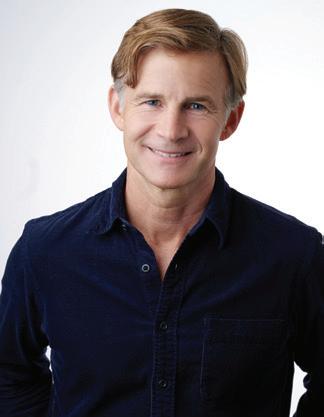
Reynolds is excited to serve an active role in stewarding COA’s unique, interdisciplinary, experiential approach to education, he says.
WILLOW GIBSON Financial aid assistant
KELLY DICKSON MPHIL ’97
Grant writer
JASON FORD Coordinator of international student services
REGAN GREER ’22 Assistant director of buildings, grounds, and campus safety
“Over the past 50 years, COA has emerged a leader in American higher education with its unique focus on human ecology,” Reynolds says. “The COA experience is transformational, not only for students, but for the broader community of Mount Desert Island, and I am grateful to join an extraordinary group of trustees to help steward COA for the next 50 years and beyond.”
Reynolds first came to Mount Desert Island with his future wife in the summer of 1997 to stay with her family in their summer house in Southwest Harbor. The pair were married at St. Mary’s by the Sea in Northeast Harbor in August 2000. They are members of the Causeway Club in Southwest Harbor and the Pot & Kettle Club in Bar Harbor.
“25 years after first coming to MDI, it is hard for me to remember a time when the restorative power, intergenerational connection, and extraordinary beauty of Acadia National Park were not an integral part of my life,” Reynolds says.
Reynolds and his wife, Diana (Buchanan) Reynolds, have lived in Alexandria, Virginia for more than 20 years. Their daughter, India, is a junior at Hamilton College in Clinton, New York and their son, Samuel, will be joining his sister at Hamilton next year.
KATIE HODGKINS ’16 Conferences and events coordinator
KELLIE HOFFART Assistant registrar
LOTHAR HOLZKE ’16 Academic services administrator
STEVE LAMBERT Buildings and grounds associate
JOSHUA LUCE Dean of student life
JOSH MILLER Lead groundskeeper
KATHLEEN MULLIGAN Day cook
SAFFRONIA DOWNING , an artist whose work reflects the histories of land and the relationship between people and the environment, is a teaching fellow joining the College of the Atlantic community for the academic year. Her work revolves primarily around clay, and she is teaching courses focused on the study of ecology, art, and ceramics.
“I am really excited by the whole concept of an education based around human ecology, and how people fit into systems, especially because my practice is all about looking at systems and tracing them through different cultural and natural permutations,” she said. “So COA feels like a really good fit for the kind of teaching that I want to do.”
Downing works with wild clay to map material residues across time and place, foraging local material to create site-specific installations and sculptures. She is the co-creator of the digital publication Viral Ecologies, “a multipronged investigation of emergence.”
“I’m really interested in helping artists realize the processes behind their art practices, and to start to investigate and broaden those processes, and to see that as part of the art itself. It’s not just what goes on the pedestal,
but it’s the whole process of what made that work,” she said. “Looking at it like that can offer a lot of new ways to engage with the materials and concepts you’re working with.”
COA’s teaching fellow program is intended to broaden students’ horizons by bringing educators from across the spectrum of approaches and practices to campus. Downing’s inclusion in the program is a great example of this, said COA Allan Stone Chair in the Visual Arts Catherine Clinger.
“Saffronia is excellent, exciting, and offers a departure from previous offerings by bringing humanecological insights from having practiced in different places with varied approaches,” Clinger said.
Downing holds an MFA degree in ceramics from the Art Institute of Chicago and a BA in studio art from Hampshire College. She taught the course Knowledge Lab: Craft Ecologies in the sculpture department at the School of the Art Institute of Chicago. Downing is the recipient of awards and residencies such as the Oxbow School of Art Fellowship, ACRE Residency, and Salem Art Works Studio Artist Residency. She recently completed a year-long residential fellowship at the Lunder Institute For American Art at Colby College.
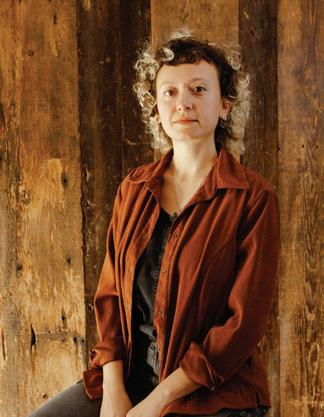
Her work has been featured in publications such as Sixty Inches From Center, Newcity, LVL3, and Number. Her work was recently featured in exhibitions at Roots and Culture Contemporary Art Center (Chicago, Illinois), Bad Water (Knoxville, Tennessee), Resort (Baltimore, Maryland), and The Franklin (Chicago, Illinois).
Downing said she is excited to meet others who are thinking about and working within the intersection of art and natural science. “I’m also excited to explore the park. I’m trying to hike as many mountains as I can. It’s my first time living near the ocean—it’s really cool,” she said.
In her free time, Downing likes to cook. “I have a farm share at COA Beech Hill Farm, so I’ve been enjoying trying really hard to use up all my vegetables,” she laughs.
I’m really interested in helping artists realize the processes behind their art practices, and to start to investigate and broaden those processes.
THECOLLEGE OF THE ATLANTIC COMMUNITY is excited to welcome Laurie Baker as a new faculty member in computer science. With her rich academic background and her experience working with statisticians and data scientists from across the globe, Baker brings new perspectives and innovative approaches to this important field.
Baker, who was drawn to COA’s self-directed, interdisciplinary program, said she is looking forward to expanding course offerings in computer science and to collaborating with and learning from students here.
“One of the things I find really exciting about computer science and data science is that they can touch so many different fields,” Baker said. “I love the breadth of what’s possible to do in data science and in computer science, and I really like the ways that student interests extend my own learning into other topic areas that I haven’t looked at or thought about before.”
Baker is a disease ecologist and marine biologist by training, with a keen interest in programming, data science, and the use of novel data sources in research. Her work focuses on understanding how dynamics change over time and space in human and natural systems, including how diseases spread, how animals move, and how fish populations are managed. She uses special tools and techniques from the field of data science to study these patterns and to see how different interventions and policy decisions can affect them.
“One of the courses that I’m really excited about is teaching a community-engaged data science class that works with regional partners on data science questions. These projects can give students really valuable experience in applying data science techniques to local problems and working in partnership with organizations to understand local needs and to exchange knowledge. These projects also present great opportunities for students to connect with the community around them,” she says.
Baker reflects all the best of what is happening in computer science, said COA provost Ken Hill.
“Dr. Baker’s research is action-oriented, her teaching is inspiring, and her commitment to social justice is sound,” Hill said. “Her cutting-edge work on disease ecology fits very well into the broader frame of human ecology. We’re so happy to have her teaching here at COA.”

Baker holds a PhD in ecology and evolution from University of Glasgow, an MSc in marine biology from Dalhousie University, and a BSc in marine biology from the University of St. Andrews. She has held positions as a visiting assistant professor of digital and computational studies at Bates College, head of faculty and data science lecturer in the UK at the Data Science Campus at the Office for National Statistics, and Medical Research Council fellow at University of Glasgow. She has also spent time as a visiting researcher at the Universidade Federal do Paraná in Curitiba, Brazil, King Abdullah University of Science and Technology in Thuwal, Saudi Arabia, the Norwegian University of Science and Technology in Trondheim, Norway, and the Instituto de Fomento Pesquero in Valparaíso, Chile.
Baker has authored a number of papers about her research on rabies, gray seals, fisheries, and pulmonary arterial hypertension in journals including PLOS One, Philosophical Transactions of the Royal Society B: Biological Sciences, Movement Ecology, Environmental Biology of Fishes, and the American Journal of Respiratory and Critical Care Medicine.
When she isn’t working behind a computer, Baker is an enthusiast of all things outdoors.
“I love hiking, sailing, and biking, and playing sports like soccer and ultimate. I am working on becoming a better skater—I’ve got a pair of Nordic skates that your Nordic ski boots can clip into. They are great for going out on rougher ice, I’m hoping to explore some more of the frozen ponds and lakes in the area,” she said, “I also really enjoy learning languages, I have been practicing Spanish, Italian, and Portuguese over the years, and I’m looking forward to continuing with that.”




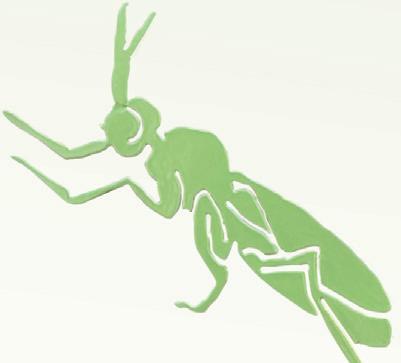








ABUSTLING WORLD that’s typically hidden away is the focus of a sculpture newly adorning the front of the George B. Dorr Museum of Natural History. Saproxylic Food Web, by Robert Haskell MPhil ’22, showcases in bright, shiny colors some of the thousands of creatures that inhabit the ecosystems around decaying trees.
“The sculpture is designed to educate people about dead wood and the vast array of creatures that all live on dead wood and depend on dead wood for their survival,” Haskell says. “These are teeny, tiny, crawly things that no one will ever see, so, I’m bringing them out in the open and making them big and colorful.”
The Saproxylic Food Web, Haskell’s thesis for his MPhil degree, details 120 larger-than-life metal bugs circling the wide trunk of a dead red pine that was otherwise destined for the wood chipper. The tree is stabilized by a hidden steel beam anchored to a buried, three-foot concrete footer, which also holds the hundreds of feet of solid COR-TEN steel circling the tree. Haskell estimates the metal infrastructure weighs 4,000-5,000 pounds, and says it is designed to outlast the decaying tree.
“People destroy dead wood wherever they see it, but really it’s the fundamental building block of this hugely important ecosystem. Saving this tree by making a sculpture that will hold it up is really important to the piece.”

Haskell came to COA for a master’s degree after earning a BFA in sculpture from The University of the Arts in Philadelphia. His self-directed path at COA gave him the opportunity to incorporate ecology and science into his artwork in thoughtful and novel ways, he says.


“I spent my time here melding my metalworking and other sculptural practices with biology and ecology and all these different science classes,” he says. “I got to personally work with the professors to see how this knowledge intersects with the sculptures I’m making and how can I really meld them together into something that’s more than the sum of its parts.”



WHILE ROBERT HASKELL’S WORK is busy illuminating the hidden ecosystem in front of the Museum, the facility is also buoyed as of late by an elegant, accessible route of entry thanks to the thoughtful work of Lauren Brady ’21. Brady’s senior project, Bringing the Dorr Museum Entrances into ADA Compliance: From Development to Implementation of a Landscape Architecture Design, addressed an access problem that had been with the museum since its opening, while framing the landscape with artful stonework and native plantings.
Brady was first introduced to the need for an accessible entrance, and pathway to the back door of the museum, in the Landscape Architecture Studio Class, and as she thought more about the problem she realized she could help address it by making it the focus of her senior project. She engaged closely with museum stakeholders, worked collaboratively with the relevant COA governance committees, drafted design options and, with community support, moved a final design into construction drawings, materials estimates, and site permitting. COA President Darron Collins ’92 was taken with the project and began seeking support right away.
“Darron showed an immediate desire to push the plans forward despite their unapproved and early-process character, and began pursuing leads for donors,” Brady wrote in her senior project papers. “By the final week of fall term, to my shock, and to the pleased surprise of

committee members, the president had raised $25,000 from an anonymous donor.”








After the Dorr Museum was opened about 25 years ago, the landscape was never completed and a temporary wooden ramp and gravel path became the front entryway, Brady notes in her senior project. This front entrance was not in compliance with the Americans with Disabilities Act because it is too steep. In addition, the rear entrance had no formal path to it, despite the fact that for most of the year it is the primary entrance and exit used daily to access classes and staff offices.

“Making the museum entrances accessible is critical,” Brady wrote. “The Dorr Museum is the public face of the college, hosting 12,000-14,000 people annually. Those visitors range from summer tourists to educational programs, and they frequently have no other tie to or experience of the campus.”
“As I reflect on this project, I am thinking about landscape architecture as a form of facilitation, first among people and their various needs and wants; in this case I learned a lot about how the museum hosts visitors and how things change within the institution of COA,” Brady wrote. “I also think about this role as facilitating relationships between the land itself and the people who live on it. Beyond the straightforward need for accessibility, I hope this landscape will create new space for community events, and invite people to engage with our native ecosystems.”
The COA Dorr Museum of Natural History has a beautiful, accessible entrance thanks to the work of Lauren Brady ’21. By Rob Levin
By Rob Levin
AFTERTHREE YEARS of bringing working artists to campus, the College of the Atlantic Kippy Stroud Artists-in-residence program has been permanently endowed and is set to expand. Thanks to a $1.14 million grant from the Marion Boulton “Kippy” Stroud Foundation (MBSF), the program will be funded in perpetuity and grow from an established early fall residency into the academic year.
“Connecting with art can show us that culture is continuously produced and is not locked into narrow timeframes that freeze moments and peoples—rather it reforms, rebuilds, and rejuvenates worlds and world views,” says COA Allan Stone Chair in the Visual Arts Catherine Clinger, who has led development of the program. “The artists who visit COA and Mount Desert Island as part of this program can help us enter into conversation with culture and nature in ways that can nourish our spirits as a broadened learning community.”
As part of the endowment agreement, the established month-long fall residency program will continue as it has in 2019, 2021, and 2022, while two new programs, the Kippy Stroud Emerging Visiting Maine Artist(s) and the The Kippy Stroud Memorial COA Lecture will further add to the offerings. The two-week visitor program will allow a Maine artist, chosen by COA arts faculty, to contribute directly to the studio classroom as a collaborative shared space, incorporating the program into a COA arts course in the late winter or early spring term in context with COA’s core human-ecological field of study. The public lecture, set for late May each year, honor’s Stroud’s original Acadia Summer Arts Program in Bar Harbor, which included several lectures per week. Lecturers will be selected from three nominations from COA and three candidates identified by the MBSF board.
“The much-amplified COA Kippy Stroud Artists-in-Residence Program will perpetuate the vision and spirit of Kippy’s commitment to generous hospitality, creativity, artistic achievement, and bringing artists together with time to relax, foment new ideas, and be inspired by the natural splendor of MDI,” says Stroud foundation board member Patterson Sims. “This program powerfully builds upon the legacy of Kippy’s legendary Acadia Summer Arts Program, familiarly known as Kamp Kippy, and her role as the founder, director, and funder of the Fabric Workshop and Museum in Philadelphia, along with her family’s deep, multi-generational attachment to Mount Desert Island.”
The creation, expansion, and endowment of the program would not have been possible without Clinger’s work, said COA Dean of Institutional Advancement Shawn Keeley ’00.
“I want to thank Catherine for her vision for the program, management of the first several years, and excellent stewardship of the relationship with the foundation, which has led us to this point.
BRAVA CATHERINE!!” he wrote in a recent email to the COA community. “This program will not only bring wonderful opportunities to our students, faculty, and staff in the years to come, but it will also further establish COA as a center of gravity for the arts here on MDI and in Maine.”
Stroud was a talented artist, teacher, generous philanthropist, and impassioned promoter of contemporary art and artists. Starting in 1977, she founded, funded, and directed The Fabric Workshop and Museum in Philadelphia, an experimental program for artists working in textiles and many other media. On MDI, where she spent summers, she oversaw and funded the Acadia Summer Arts Program (ASAP), or as it was affectionately known, “Kamp Kippy.” For almost three decades ASAP hosted hundreds of artists with their guests and families.
Kamp Kippy, in the words of the scholar and curator Debra Bricker Balkan, “represented a high-octane salon, an exhilarating retreat where ideas were exchanged over dinner, before lectures, and on boat trips, walks, and off nights with fellow guests…


ASAP was the outgrowth of her phenomenal largess, of her desire to bring extraordinary people together.” Kippy passed away in 2015 and her foundation is committed to carrying her passion for art forward.

“W HAT WOULD BE YOUR IDEAL college experience?” A friend asked me this question a couple months before I applied for college. I described my dream university experience as an intimate school community
situated by the ocean with small class sizes, hands-on, place-based learning, and a focus on both marine biology and sustainable development. Smiling, he told me about College of the Atlantic. Intrigued, I immediately began
researching COA and fell in love with the school. Although you can never quite tell what a place will be like from websites and brochures, COA has been everything I was looking for and more.

Silt, coarse gravel, cobble, boulder. As an outsider, you might have wondered why the 15 students of earth science professor Sarah Hall’s Watersheds class were zigzagging across a stream, picking up every rock at the toe of their boots. By measuring rocks, we were able to learn about the effects of erosion and sedimentation on the composition of Breakneck Brook. During this class, we learned many techniques to monitor streams, but my favorite data collection days always involved standing hip deep in water as the stream flowed past me. At the end of the course, we synthesized this data to create a report for Acadia National Park. I particularly enjoyed this class, and I learned concrete, field-based skills while simultaneously getting to know the watersheds of MDI. This helped me feel more connected to the place I now call home.
Waking up at 6:30 in the morning to trudge across a mud flat is not the first thing that came to mind when I was thinking about college, but it was definitely a highlight of my Marine Ecology class. On this one early Tuesday morning, ecology and biology professor Chris Petersen picked me up to drive to Otter Creek. As we wandered down to the flat dressed in waders and carrying wooden frames stapled to mesh sheets, the sulfuric smell of mud woke me up with its pungent odor. Although we were there to install the recruitment boxes to measure predation on clams, I probably spent more time trying to figure out how to walk in mud. Coming back to campus completely drenched in sludge was a highlight of my term and made me feel rejuvenated.
DEPT/ID COURSE NAME




ES 5045 Marine Ecology
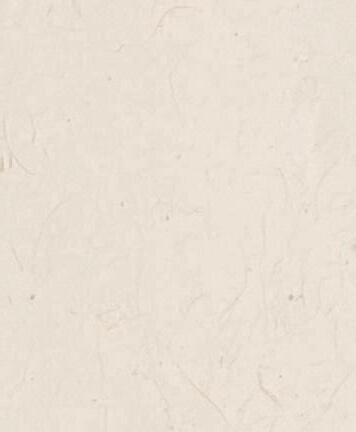





ES 3085 Watersheds
ES 10762 Polar Ecology and Exploration
Monday/Thursday Petersen, Chris
Monday/Thursday Hall, Sarah
Todd, Sean
Monday/Thursday
1
1 1











A FOGGY SUMMER MORNING as the tide rolled in and the smell of salt wafted through the air, we examined garlic-scented sea stars, barnacles the size of cups, and bright orange sea cucumbers. For my internship I was a kayak guide in Haida Gwaii, an archipelago off the West Coast of Canada. One of my favorite aspects of kayak guiding was having the opportunity to share my excitement and care for the ocean.
While backpacking on a seemingly pristine beach on Vancouver Island, I discovered broken laundry baskets nestled between logs, fragments of microplastics scattered throughout the sand, and even a buoy from Singapore. That moment was when I became concerned about humans’ environmental impacts on remote locations. When marine sciences professor Sean Todd asked me to write an eight-page essay on any topic related to the Arctic or Antarctica for his class, Polar Ecology and Exploration, I decided to use this opportunity to dive deep into my passion for microplastic pollution. At first, the length of the essay seemed daunting, but once I started researching, I couldn’t stop. Time flew by and mealtimes slipped past as I sat in the computer lab sifting through paper after paper on different aspects of microplastics in the polar regions. What scared me the most was a study I read disclosing the presence of microplastics on the Byers Peninsula, one of the least-visited places on the planet. This got me thinking; if there’s plastic in desolate locations of Antarctica, do areas of untouched wilderness even exist? Although the research project raised more questions than it answered, it inspired me to continue searching for and creating solutions and answers as I continue with my time at COA and beyond.

 By Jeremy Powers ’24
By Jeremy Powers ’24
It’s the cold that wakes you up, and it’s the achy pinch of the wood plank floor that keeps you from going back to sleep. The room is silent, save for the occasional rustle, and it seems that even the birch bark canoes, hanging on the wall, slumber still in the glow of the early-morning sun. You sit up, disentangle yourself from your sleeping bag, and quietly shuffle your way through a minefield of sleeping forms and slumbering shapes.
The door to the lodge squeaks a little, so you open it ever so slowly, and for a moment you stand on the porch and marvel at the glory of winter in the far north— wind-carved snowdrifts sparkling in the sun, icy arctic fingers pinching your nose and your ears, the bonedeep silence blanketing everything in a curious, intangible feeling.
Your chattering teeth remind you to go back inside, and the woodstove greets you warmly as you enter, inviting you to pick out a book from the pine-clad wall on the right. You oblige, and throw your eyes across titles that tell tales of grueling expeditions north, others that describe the land and who was here before us, and at least one that tells you how to build a sauna.
FOR DECADES, Alexandra Conover Bennett ’77 and Garrett Conover ’78 used this lodge as a base for their Registered Maine Guide business, North Woods Ways. Here, they taught and practiced traditional skills in the North Woods of Maine, and provided long distance backcountry expeditions to people from all across the world. For at least 25 years, College of the Atlantic classes have been visiting and using the property for coursework, recreation, and outdoor leadership training and adventure. Now, as Conover and Conover Bennett prepare to retire, ownership of North Woods Ways is transferring to College of the Atlantic, under whose supervision it will continue as a premier resource for experiential learning in the outdoors.


“We had an approach and a uniqueness and a way of doing things, but we are not interested in cloning that in whoever comes next,” Conover says of the property, and their way of life there. “We want people to accept things that are useful, modify what’s different now, keep it flexible and evolving and growing, for the needs of whoever is currently keeping those flames. I think there is a tendency for some places to preserve the exactness of something, and I don’t think that’s necessarily good or smart.”
Conover and Conover Bennett founded North Woods Ways together in 1980, and over their 27-year career they made a lasting name for themselves with their traditional approach to traveling through untrammeled wild places. They specialize in using woodcanvas canoes and handmade wooden paddles for summer
travel, and they have mastered the use of traditional ash/rawhide snowshoes, handmade toboggans, and wood-heated canvas tents for the winter. Often traveling hundreds of miles in the span of a few weeks, their expeditions attracted people from all around the world, and their techniques garnered widespread attention.
“We just kind of followed our passion and we became known for using traditional classic skills to travel in the North Woods… and we just suddenly realized that everybody else wasn’t that way, so all the journalists came flocking to us,” Conover Bennett laughs. “We didn’t ask for the attention.”
The purchase of the property was made possible by a generous donation from the Cornelia Cogswell Rossi Foundation, an organization dedicated to community needs such as healthcare, education, and environmental conservation. The main structure at the property will be renamed the Rossi Lodge in honor of the gift.
Anne Green, a Rossi Foundation board member, said she was inspired by the potential that the property has for COA and others. “We loved the concept of a winter academic basecamp, and the year-round educational component and platform for engaging surrounding schools,” Green says. “The collection of wilderness equipment, tools, and books represent a rich cultural history of the North Woods that will provide additional knowledge and learning opportunities for students.”
COA began using North Woods Ways decades ago for field trips
for courses like Winter Ecology and as a training ground for the outdoor leadership program. The relationship evolved organically over the years and COA students have long been welcome guests on the property, Conover Bennett says.
“We maintained this connection with the college, just naturally, we didn’t go out of our way, it wasn’t any plan; it’s just that these were human beings that we were really fond of,” she says.
One of the most remarkable things about this moment, as the property transfers into the college’s hands, is how reciprocal the relationship has been and continues to be, Conover says.
“The college thinks we’re the legacy people, and treats us as such, but we’re saying, No, no, no… COA is the legacy. And we each think the other is the better entity of the bunch,” he says. “To me, that just speaks well of all of us.”
As part of the property transfer, Conover and Conover Bennett are donating a considerable amount of outdoor gear, including tents, axes, skis, toboggans, canoes, and other assorted camping gear.
“We’ve had so many completely generous mentors and donors and friends who’ve contributed to our venture here in all sorts of ways, and it’s just the fabric of the tradition that we are happy to contribute to,” Conover says.
Aside from being world-renowned wilderness experts and travelers, Conover and Conover Bennett both enjoy getting creative in their free time, something that has helped fill the long, dark, cold winter nights in the north country.


“Music is probably my strongest passion. I think for a few decades now, I’ve been playing at this Finnish Farmer’s Club, playing this traditional 1920’s Finnish dance music,” Conover Bennett says. “And I would say the other thing is picking walks in the woods at my own pace, not being distracted by guiding, and getting to look at stuff, study stuff, discovering freshwater jellyfish, and do some natural studies on my own.”
Conover, for his part, continues to write and hone his photography skills. “It’s all related, it all circles back to northern cultures and skill groupings and stuff that’s always fueled me, but it’s fun to be in a place now where the pace isn’t so dependent on making a living from it. In some ways it’s more fun, I can just do exactly what the primary obsessions are, the goals and interests,” he says.
Both say that welcoming so many COA community members to North Woods Ways over the years has been an inspirational, rewarding, and essential part of their adventure, and knowing that the property will continue to grow and evolve under COA’s leadership is reassuring.
“Working with COA students means so much to me,” Conover Bennett says. “Having students pitch in and help with little things here and there, eating together and hanging out, listening to them, what they talk about, think about, wonder about… their questions are just remarkable, and that just means an enormity to me.”
Conover nods in agreement. “It’s the fire that’s important,” he adds. “The fuel can change a little bit, but the fire has to keep going.”
Alexandra Conover Bennett ’77 encounters a moose while paddling a traditional birch bark canoe in the waters of northern Maine.HANA KEEGAN’S COA JOURNEY
began at the back of a crowded lecture hall at a sprawling university in London. Keegan, who graduated in 2017, remembers the moment she knew she needed a more hands-on approach. “I found my way to COA by trying the polar opposite first,” she jokes. “I was sitting with 400 other students in a lecture on economics and scrolling through COA’s website. I remember thinking, Wow, these students get to go kayaking!”
The academic flexibility and small size of the college also appealed to Keegan, who grew up on the 13-mile long Tortola Island in the British Virgin Islands and was homeschooled until late high school. Initially, she focused on climate politics, gravitating towards Doreen Stabinsky’s classes and the climate justice advocacy of the student-run Earth In Brackets. “The climate policy track was a big pull for me when I was considering COA,” she says. “But I also remember emailing [Joanne Woodward and Paul Newman Chair in Performing Arts] Jodi Baker before I even arrived asking her if I could be in her Play Production course.”

Keegan decided on other classes that first semester, but theater was never far from
her imagination. When she finally took the plunge—signing on as an actor and dramaturg for the 2016 COA production of The Sneeze, a vaudevillian collection of Chekhov shorts—she knew she’d found her place. “It was the happiest I ever felt at COA,” she recalls.
Building on what she learned working on The Sneeze, Keegan used her senior project as an opportunity to try her hand at directing. Collaborating with community members and a local theater in Crested Butte, Colorado—a tiny ski town where she has close family ties—Keegan produced and directed Waiting for Lefty, an American classic she studied in one of Baker’s courses. “In many ways, I didn’t really know what I was doing at the time. But Jodi’s trust, and her encouragement to go try and figure it out on my own, was fundamental.”
Since that first foray into directing, she’s never looked back. Now based in London, Keegan has worked as an associate director, dramaturg, and accessibility consultant for almost a dozen productions at the National Theater and the Old Vic, including a 2019 revival of Arthur Miller’s All My Sons starring Sally Field.
The path has not always been easy. Shortly after leaving COA, Keegan enrolled in an intensive program for emerging directors. “They had us working for three weeks, no days off, 10 a.m. to 10 p.m. every day. My journey to identifying as having a disability began with that training.” Sharing her diagnosis of mild cerebral palsy with me during our interview,
she reflects, “I’ve had to constantly fight so hard to stay in the industry because it is not set up to be inclusive or accessible, in so many ways.”
Keegan knew that to continue working in theater, she needed to find a different model. This led her to the UK-based Graeae Theatre Company. According to their mission statement, “Graeae is a force for change in world-class theater, boldly placing Deaf and disabled actors center stage and challenging preconceptions.”
Training with Graeae not only brought Keegan back to London but also connected her with other companies, directors, and artists working at the intersections of theater, access, and disability justice.
Most recently, she collaborated with Sacha Wares, associate director of the National Theater’s Immersive Storytelling Studio, to mount Museum of Austerity, a virtual/mixed reality installation that explores the lived consequences of British austerity measures of the 2010s.
“One of my biggest roles for the show was as an access consultant,” says Keegan. “But I think Wares wanted me on the job because I’m not afraid to have honest conversations with her about the technology and to say, I don’t know. Let’s try and figure it out. What happens when we use the technology this way or that?” She continues: “Mixed reality is incredibly interdisciplinary—I think this project is the most human-ecological thing I’ve done since leaving COA.”
Keegan is specifically compelled by the questions that emergent mediums like virtual reality raise for artists and audiences alike: “One of the things that fascinated me working on this project is that this medium is so new, there aren’t any rules yet. So we need artists and writers and dramaturgs to be part of the development process.” Human ecologists, too.
STILL DARK when Arlo Hark ’18 and Josie Trople ’18 start their morning. After breakfast and coffee, they call for their border collie, Frazey, and hop into their green 1994 Dodge 2500 pickup and set off. After driving for a bit through the vast cornfields of Northfield, Minnesota, the trio pick up their semi truck and quadruple-decker Merrit livestock trailer. As the daylight settles in, they arrive at their destination: a 30-acre solar array. Framed by a sea of shimmering photovoltaic panels, Hark and Trople set up a temporary corral while Frazey goes to work rounding up their flock of just over 100 Rambouillet sheep. The aluminum chute clangs as the flock loads into the trailer single file, from bottom to top. Hark cinches the doors and hitches up their 500-gallon water tank. With all of the flock accounted for, the team takes one last look around and heads off to their next gig.







couple have found themselves working in the burgeoning field of agrivoltaics, which fuses clean energy and animal husbandry. As Cannon Valley Graziers work to expand their flock and their range, so too is the United States working to expand the use of solar energy. Hark and Trople are on the cusp of something big.
Hark, Trople, and Frazey are Cannon Valley Graziers, a family enterprise specializing in adaptive livestock grazing and vegetation management. They’ve flipped the traditional grazing narrative of paying for access to land on its head; rather, they are paid for their sheep-powered landscape management services. While they started out aiming to apply their grazing methods to prairie and forest settings, the
The United States is poised to experience a solar installation boom, following the passage of the Inflation Reduction Act in August 2022 and the setting of ambitious carbon reduction goals for the next decade. The opportunities to incorporate novel agricultural practices such as solar grazing into this development are many. For young sheep farmers like Hark and Trople, the opportunity to earn a living while creating lasting positive impacts on the land around them is incredibly valuable. In a modern twist on an ancient relationship, humans and sheep are coming together as vehicles of ecological transformation and sustainability—an exciting prospect in this changing world.
“The land going into solar here in the Midwest has often been over-extracted through decades of conventional monoculture. There’s been a push from environmentalists and conservationists to incorporate native species for pollinator habitat, but there’s also a bunch of folks who really want to see the land stay in agriculture,” says Trople. “Sheep are an excellent solution.”

The two started their flock in 2018 with hopes of having a lasting positive impact on the ecology and soil health of Southern Minnesota while also providing food for their community. They dove into adaptive grazing while also generating lamb sales through local CSAs, coops, and restaurants. A year later, they came into contact with American Solar Grazers Association cofounder Lexi Hain, who helped them learn about and break into solar grazing. Since then, they have secured landscape management contracts with solar developers, getting paid for every acre their flock grazes. This year, they expanded their business with the launch of Bayl, a sustainable woolen goods company using hand-spun fiber from their flock.
Hark and Trople’s flock grew to just over 100 sheep this year, and Hark thinks that they can keep growing—a lot. With their business model, he says, they can multiply that number exponentially. The sites they currently graze range from 5 to 50 acres, but they both want to go bigger, hoping to graze sites as big as 1,500 acres with a massive flock of sheep.
“I’d like to be grazing thousands of sheep. Like five or ten thousand sheep on big sites,” he says.







The installation of large solar arrays can be controversial in rural communities, as it removes land from agricultural production, and can be perceived as an eyesore. Solar grazing changes that by keeping the land in agriculture, and, for some critics, the familiar sight of livestock grazing beneath the panels can change how they feel about a solar project in their county.
“Managing the vegetation on these sites is not only critical for the aesthetic, but also for the site function,” explains Hark. “In order to keep these sites operating safely and efficiently, good vegetation management plans are crucial. So what we are doing is using targeted grazing as a land management tool to meet very specific site objectives.”
When explaining their business model, Hark has found that some have trouble wrapping their heads around it. People cannot figure out how on earth these two young farmers have managed to flip the grazing narrative. What Hark tries to drive home to people is the ecological service they are providing. It’s landscape management, but with stacked benefits for the soil, pollinators, sheep, and people.
“Land access is one of the biggest barriers to entry in Minnesota. Young farmers generally have a really hard time finding land, which is one of the reasons that solar grazing is a great way to grow a profitable land management/livestock company,” Hark says.
Sheep are perfect for solar grazing both in size and behavior. Mowing under the panels requires expensive, specialized equipment, but sheep have no trouble fitting beneath the arrays. The sheep go through less water when grazing on solar sites; the panels provide shade for the sheep, keeping them cool on hot days. Solar grazing is a win for developers who save money when switching from commercial landscape management practices, which can cost more and can also have the potential to cause damage to panels.
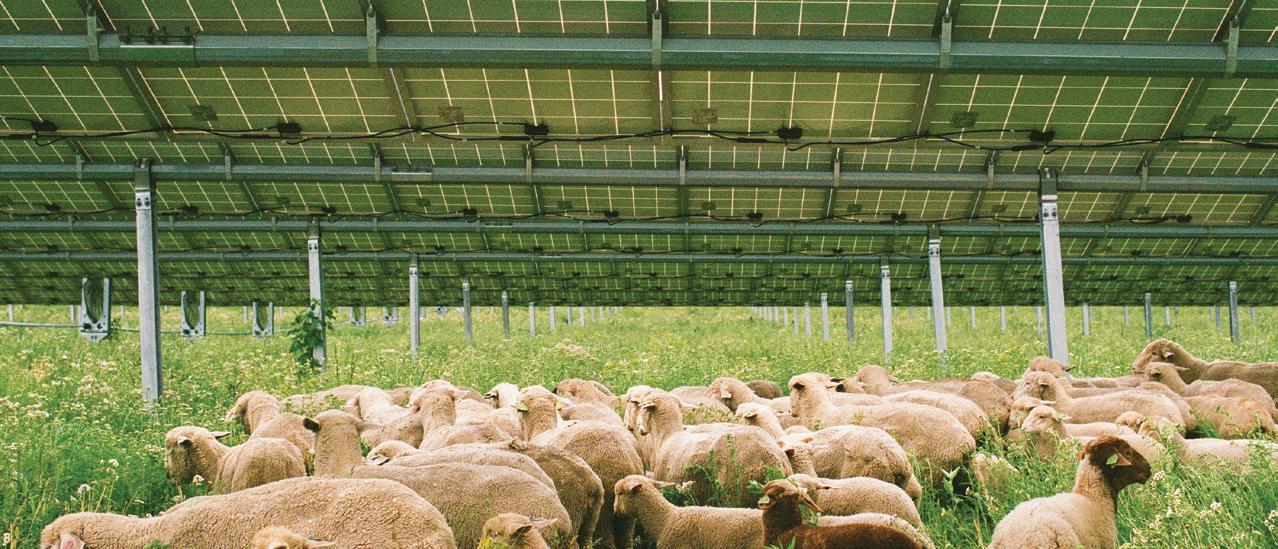
The lives of sheep and humans have been tightly knit together in the Western world for thousands of years. Throughout history, sheep have served as potent cultural symbols, appearing in mythology and religion around the globe. Humanity’s wooly, four-legged friend has historically been vital to survival, producing food and fiber essential to existence, but sheep, as part of the portmanteau biota—a collective term used to describe the organisms Europeans brought to the lands they
The US is poised for record-breaking installation of solar and wind power as the government works on reducing carbon emissions by 50% by 2030. The US currently has 139 GW of solar capacity, enough to power 23 million homes. The Inflation Reduction Act set the stage for an increase of operational capacity of at least 40% over the next five years, with some organizations predicting as much as a threefold increase.
Both Hark and Trople come from agricultural backgrounds; Trople’s family raised cow and calf pairs and cut hay, while Hark grew up in Cannon Valley with his family’s small flock of sheep. The couple met at College of the Atlantic.




While at COA, Hark gravitated towards English and creative writing, studying poetry with writing professor emeritus Bill Carpenter and diving into music composition with former music professor John Cooper. Trople studied agroecology and field botany, taking classes in food anthropology and food systems. Trople spent the winter of her senior year in Spain with history and Latin American studies professor Todd Little-Siebold’s Cidra, Queso y Granjas: Agriculture’s Past and Present course, an intensive three-week, field-based exploration of the history and contemporary reality of Spanish agriculture. Both Hark and Trople have found their studies in human ecology to be very connected and intertwined with what they are doing now with Cannon Valley Grazers.
“Human ecology is at the core of solar grazing,” Hark says. “You have issues of land management, soil health, ecology, sustainable energy production, agriculture, and

colonized—have also been vehicles of destruction and colonization.


“There’s so much sheep, wool, and fiber arts symbolism woven into cultures at so many levels,” says COA Elizabeth Battles Newlin Chair in Botany Susan Lecher, who teaches Sheep to Shawl, a course on the human ecology of sheep. Lecher notes it’s difficult to talk about the symbolism without making terrible puns. “So much of the way we talk about the fabric of the universe, how
livestock. There are so many different touchpoints, so you really have to be able to think on a systems level in this work.”


Both Hark and Trople knew they wanted to do something related to agriculture in the midwest after graduation.

different bodies of knowledge are woven together, so many metaphors that we use to describe existence tie back to the arts of making textiles and cordage. In prehistory, a lot of those textiles were coming from sheep.”

Sheep are thought to be the first animal domesticated for food by humans 11,000 years ago. While they were initially domesticated for their milk and meat, around 6,000-9,000 years ago wooly sheep appeared and were rapidly selected for breeding because of their ability to produce fiber. It’s difficult to imagine sheep without the
fluffy wool coats they have today, and this development radically changed humanity, not just within humans’ relationship with sheep, but with the world.
“Through their wool, sheep also impacted the development of commerce and stock markets. A lot of what was traded was futures in wool. If you look at the history of economic systems and trade networks, much of it was initially built around wool production, wool manufacturing, and cloth production,” says Lecher, “Sheep are deeply tied to a lot of human history.”

During their senior year, an elder from Hark’s hometown of Northfield asked if they were interested in grazing an eight-acre piece of overgrown silvopasture. They jumped at the opportunity.
“There was this intention going into it that our animals would do something good for the land while we would also be producing food for our community,” says Trople. “Using animals to have a positive ecological impact on the land was important to our goals and what we wanted to do from the beginning.”
During their senior year, Hark and Trople pooled their savings and bought 20 lambs, sight unseen, off of Craigslist, sending a deposit through the mail. After graduating, they headed to Northfield, met their new flock, and began grazing on the land that had been offered to them.
Hark and Trople worked on small grazing projects all over Rice County, traveling scores of miles from their Northfield home with their flock. As they expanded their scope and pushed the boundaries of what they were trying to do, they started pitching their services to developers, sending emails, making cold calls. Their persistence has paid off.
Trople first became involved with fiber processing in 2019, when she and several other small producers from Minnesota and Wisconsin pooled their fiber to have it processed and made into socks to be sold at a fiber tour event. This gave Trople an opportunity to see what fiber processing looks like, and it felt like something she wanted to pursue. From then until the recent launch, Trople has been working diligently on feasibility studies and business planning for processing and using their fl ock’s fiber.
Trople has worked to incorporate traceability and sustainability into the business model, closely working with the few remaining domestic wool processors and using only natural dyes for Bayl’s garments. She is active in her involvement and understanding of the whole process, from shearing to processing, to garment making, labeling, and packaging. Each stage of the process is slow and thoughtful.





“I think it comes back to integrity,” says Trople. “There’s a lot out there that’s being marketed as ethical and sustainable. It’s important to me as somebody who’s producing the fiber—the first step—that the integrity follows through with every part of the process.”

Trople has been working towards launching a woolen goods company since 2020. This past December, her brand, Bayl, launched its first batch of heirloom-quality, utilitarian, gorgeous wool products.
“The products are designed to be worn by rural folks and farmers, but also for people who are interested in slow, ethical fashion,” says Trople.
Eva McMillan ’24 is a third-year student at College of the Atlantic. She wrote this article as part of an independent study in nonfi ction writing in fall 2022.

INA WAY, COA chose me before I decided on COA. I was adamant about not wanting to study in the US. In the US, education is something that people go into debt for; I did not want to support that system, and I couldn’t imagine living in a place that didn’t have free healthcare. I still feel this way. I have paid more for healthcare since being in the US than I have paid in medical fees for my entire life, and yet here I am feeling more
at home than I ever have. COA was, as dramatic as it sounds, a lifeline for me. It helped me out of one of the biggest struggles of my life. I was burned out and struggling with depression after working in healthcare during a global pandemic, and COA was the thing that made me get up again. After two years alone in an apartment in central Berlin— surrounded by people and yet incredibly lonely—I was longing for community, longing for the
intercultural exchange that I had experienced at United World College, and longing for a path that had more than one direction.
My fall term classes were the exact mix that I wished for before coming to COA; a science class, a writing course, and a course that cannot be put into a single subject group.
COA is my home now; a place I didn’t look for, but found me.

The Human Ecology Core Course was confusing, sometimes irritating, and other times wonderfully exciting. It made me want to learn more, it made me understand less, but it also allowed me to see there is a lot that goes into the work of understanding. I loved the fact that we had an opportunity to learn with so many different faculty members, even though sometimes the one-week intervals felt too short. I am looking forward to reading the first draft of my “What is Human Ecology” essay in four years and seeing if and how my perspectives have changed, who I’ve become, and how my perceptions of this place have grown.
My writing course with Palak Taneja, Amitav Ghosh and Climate Change, was an incredibly engaging academic experience. I still often think about passages I read in The Great Derangement by Amitav Ghosh and the discussions we had in that class. I wrote a ten-page paper about the failings of fictional media in regards to the climate change crisis, which was an eye opening research process. As someone who would love to write a book or two in my lifetime, understanding the power of fictional media is something I will hopefully never lose sight of.
DEPT/ID COURSE NAME




HS 5055 Tutorial:
Amitav Ghosh and Climate Change

HE 1010 Human Ecology Core Course
ES 1086







Introduction to Field Sampling










TALK about my experience at COA without mentioning buildings and grounds (B&G). When I got assigned to them through work-study I cried. I had been told that it was the worst work-study to have, and all I would be doing was shoveling snow. So, of course, I choose to include a picture of me on one of those shoveling days, but as you can see, there is very little misery in my expression. B&G has turned into my anchor on campus. The crew is like a quirky family to me. There is so much to learn from all of them and they are such incredibly kind, helpful, and funny human beings. I couldn’t be more grateful for all they have done for me at COA.
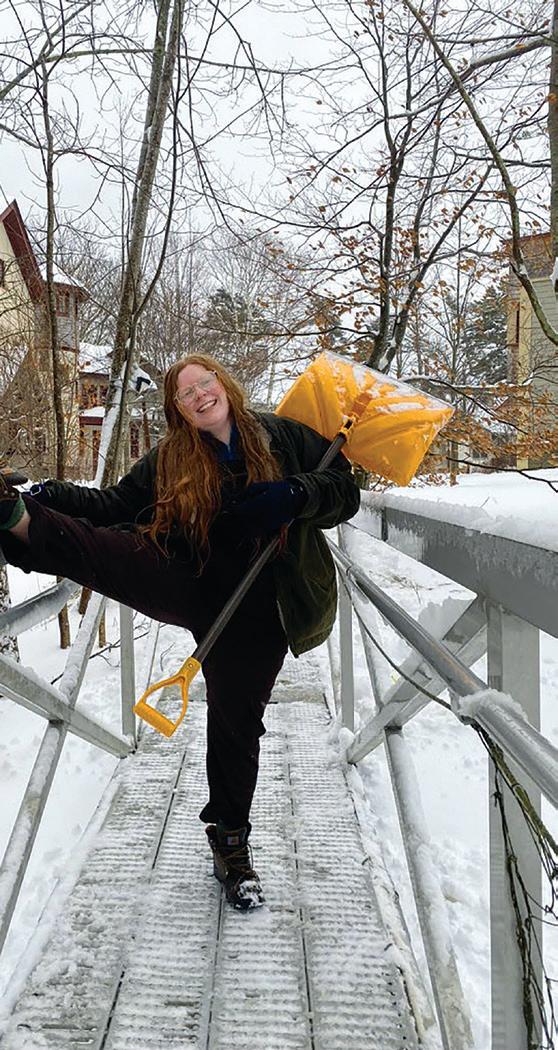
My Introduction to Field Sampling class was connected to the Human Ecology Achievement Program of the Sciences. We arrived on campus a couple weeks earlier than other incoming students and had the chance to take trips into the field and learn sampling techniques in a way that would have not been possible during the term. As an international student, it was a great experience to be able to participate in. Professor Reuben Hudson and teaching assistant Maddie O’Brien ’22 were an incredible team. I had so much fun learning from them. We had many excursions, but my favourite one was probably the day we spent at Little Long Pond taking core samples of sediment from a canoe platform. Analysing a sample that you have taken yourself and knowing exactly where it is coming from is an incredibly rewarding experience.

An interview with COA Spanish professor KARLA PEÑA, the director of Programas de Inmersión Cultural en Yucatán, COA’s hallmark language immersion program in México. Peña joined the full-time faculty this year after many years of running the program.
By Dan MahoneyHow does it feel to see these students immerse themselves in Yucatán culture?
TO ANSWER this question, I have to take you back to the beginning: the winter of 1999 when the students of COA and Universidad Autónoma de Yucatán met. They sat one in front of the other along with professors and administrators from both organizations. It was a moment full of magic; after one fall term of Spanish classes, our students were in Yucatán talking and interacting with huge smiles and bright eyes. The magic is still there after all these years, with each new group that embarks on this amazing immersion journey. Every year it reminds me that a positive attitude is the doorway to the destiny of your choice.
What is one of your favorite memories from Programas de Inmersión Cultural en Yucatán (PICY)?
THERE ARE TOO MANY to count, but here are two that come to mind:
In 2010, Don Francisco Canul Poot of Yaxunah was standing with his host son, COA student Stu Weymouth ’12. There were hugs and tears, because it was time for Stu to leave what had been his home and his family for three weeks. With sincere emotion and his heart in his hands, Don Francisco told me, “This is our son Stu. He looks a little different, but he is ours.” These relationships established through the hearts of the families and students last forever.
In February 2019, Iain Cooley ’21 couldn´t believe that after a basketmaking workshop, he could understand that when your basket is full, the only way to let something new in is by taking something out, just like in PICY´s immersion program. To be fully immersed, you have to empty out some things that you carry inside in order to let new things in. His presentation was a welcome reminder that the cultural immersion process is complex, fascinating, and demands personal growth.
What draws you back to COA year after year?






THE STUDENTS are the most important reason that I return to COA. Each one has their own history and so many talents to share. They are sources of never-ending inspiration and learning. We are all students and teachers at different times in our lives.
I really love the collaborative approach that comes with COA’s vision of a humanecological approach to learning, both in what it lets me do and in the kind of students it attracts and with whom I get to do it.
Student projects mix every kind of discipline and approach, from artistic studies of making jewelry with palm leaves, to puppet theater with children, to anthropological studies of cooking, farming, or gender differences, to scientific studies of arthropods or bird migration or fisheries conservation. So every day brings fascinating new adventures. Every student gives me an excuse to meet new people and explore new aspects of the people and culture of my own beloved Bella República de Yucatán.
How has PICY changed over the years, and what are your hopes for the future of the program?





AFTER 24 YEARS, the biggest change is the kind of students we see, although it is impossible to compare the different generations. PICY has always been a personalized program, tailored to each group and each student, so each year is different. Each time a student is able to broaden their perspective and leave their familiar surroundings, the motto Life Changing, World Changing rings true. I’m convinced that a broader approach to human ecology is a way of understanding the micro-universes within our societies, and PICY allows our students to change and adapt their worldview to include these interconnections.
As I always say in my classes, “Without context it is impossible to understand the text.”

The first generation of faculty who started the COA program in México are starting to be succeeded by others who are also interested in supporting students in a variety of ways. I very much look forward to collaborating with them as their Spanish skills improve and their knowledge of the area and connections and collaborations with people in Yucatán grow. The challenges of COVID-19 forced us to experiment with variations in ways we work with rural communities.
I hope we can continue to learn from those experiences, and push the limits of what is possible for giving students really accelerated and profoundly transformative experiences through immersion in language and culture. I also hope we can continue to develop the resources for supporting and sustaining our physical facilities and, even more importantly, the team of people who work with us in PICY. They include, for example, wonderful teachers like Raul Manzanilla, as well as incredibly effective administrative staff like Lucero Guttierez and logistics staff like Don Francisco.
 COA Spanish professor and Yucatán program director Karla Peña, in red pants, with 2022-23 students; photo credit Enrique Solís.
COA Spanish professor and Yucatán program director Karla Peña, in red pants, with 2022-23 students; photo credit Enrique Solís.
WHENEVER I TOLD someone that I was preparing to go to the Yucatán program in a few short months, I would be peppered with questions about whether I had any ideas for my independent project. My response was vague, but always the same: Something with crocodiles. That past spring, I had devoted most of my academic time to various herpetological field projects, with amphibians in Acadia National Park at Duck Brook and Otter Point, and a turtle marking census at Little Long Pond for the Land and Garden Preserve. It had always been a dream to work with crocodiles, and this fieldwork would be a good form of preparation. However, Maine is not the best study location if you want to work with anything large and scaly that doesn’t have a shell. While the Yucatán program wasn’t dedicated to this form of scientific
study, its open-endedness and location in the range of two crocodile species led to a burning desire to somehow study them once I arrived.
Walking to my house in San Crisanto for the first time, I realized why I was here. Behind the carefully raked sand and coconut palms that made up my family’s backyard were the mangroves. Twisting roots and mats of glossy leaves hung over murky pockets of water, creating seemingly infinite hiding spaces for lurking reptiles.
Vermiculated tree frogs squeaked from the tops of the trees, and emerged from the walls of the house in times of rain, sometimes falling from the ceiling and inciting terror. Once one landed on the dinner table to the chagrin of my host mother, who was terrified. I quickly picked it up and took it to the nearby mangroves. I found out quickly why the Spanish
name for this amphibian is Rana lechosa, or milky frog, thanks to the thick white poison that it excreted. While I thought I washed my hands well, at some point I touched my eye and was up all night with tears and swollen eyelids.
I knew that there was a crocodile marking study in San Crisanto, but I did not know who performed it, funded it, or why they did it. I asked my family what they knew about the tagging. “Ah, lo he hecho tu Tío Mach con Don Leo.” My uncle had worked tagging the crocodiles in the past, working with a man named Don “Leo” Leonardo José, or more commonly known as Pito Loco. The next day, I biked to his house with my brother, and we introduced ourselves. After chatting for a while, he showed me some crocodiles that he had taxidermied, and I asked about the tagging. He lit up, and explained to me the whole process.

The ejido, or local land government, conducted a monitoring study of the number of crocodiles within their borders. The economy of San Crisanto is dependent on ecotourism, thus the health of charismatic species such as crocodiles and flamingos is very important, as made evident by the many murals depicting them throughout the town. During the period in which the crocodiles are primarily in accessible canals and water levels are lower, Leo and two other helpers go out at night to capture them with a wire noose attached to a stick from a tiny rowboat, then weigh, measure, sex, and mark their tail scutes.
The pages of my notebook were filling up with information as my excitement mounted. However, the prospects of participating in the tagging seemed cut short when Leo mentioned
and photos by Tess Moore ’23that the study only took place every two years, and they had just done it last winter. I must have appeared visibly crestfallen, as Leo realized that I wanted to take part in this work rather than just gather information on it. “Pues, tengo ganas de hacerlo otra vez, y si puedes hablar con el comisario para recibir fondos, es posible que podriamos hacer el trabajo esta temporada.” If I were able to convince the town commissary to provide pay for the work and give us access to headlamps and a pickup truck, then Leo would be willing to do the work this year. I talked to my family about this, and they were excited at the prospect, but told me that the commissary wouldn’t give me the funding if I asked him first. They advised me that in order to get the survey approved, I would have to talk to Don Ines Jose Loria, the head of the ejido. He was more
likely to say yes, and el comisario would almost surely agree if Loria did. After translating my CV into Spanish, I presented it to him at a meeting and explained my background and why I wanted to work on this study as part of my final project for the Yucatán program. After a couple of days, he told me yes, and we were able to start the following night.
WETURNED the corner in the rowboat, a new stretch of the canal becoming visible under the dangling mangrove roots.
“¡Aita, aita!”
About 30 feet ahead of us, two bright red flashes appeared in the lights of our headlamps before silently slipping underwater. “Aita esta.
D’espacio vamos adelante.” One would expect water filled with tannin-leaching
leaves, swamp eels, and toe-biting water bugs as big as your palm to be murky and brown, but it was crystal clear thanks to the alkaline water belched from underground by a nearby cenote.
We advanced slowly, pressing with a long stick against the mud rather than rowing, until we saw it. Blending gentle against the muck, four feet of scutes black and green and brilliant. Leo lowered his lasso into the water until the metal noose rested gently around the beast’s thick neck. However, when he hauled the cord it didn’t set right, and the reptile twisted free, running along the riverbed and leaving a cloud of silt in its wake. I felt lost at that moment, but Leo knew what to do. We followed the trail of murk, and the scenario repeated itself twice before the noose held.
The best way to safely bring a crocodile into a tiny boat is to let it tire itself out. The same “death roll” that they use to dismember larger prey items is also a defense mechanism. The croc spun and spun at the surface, frothing the water into a storm. After what felt like ages, it became tired and gave a respite from movement.
“¡Pone la cinta, pone la cinta!” Miguel, my host father, held the roll of duct tape in his hand to wrap up the croc’s jaws and neutralize the threat of a bite, but not having done this work before, I was not sure what to do. While this was my first night out and I had told myself I would take the first experience to observe and avoid any potential injuries, I was tired of feeling useless and grabbed the crocodile’s snout, closing the jaws shut with my hand, leaving

 Measuring snout to tail length of a small crocodile captured by hand in the salt flats.
Measuring snout to tail length of a small crocodile captured by hand in the salt flats.
just enough time to put on the tape.
It wiggled free once again, and spun around a few more times before becoming tired enough that we could bring it into the boat with us, where it sprawled across the middle seat, taking it up and then some.
After weighing the hefty brute at 36 kilos, we loaded it into the back of the pickup truck and drove into town. This was not a particularly large crocodile, but it was big enough that the ejido did not want it in the waters that they passed dozens of tourists through each day (Crocodile attacks in the Yucatán peninsula are exceedingly rare, and there has never been one in San Crisanto).
Three of the scutes on its tails were removed, indicating that this was a recapture and marking it as crocodile #68 out of the 233 already marked in
the ejido’s territory.
An examination of the beast’s olive-green scutes confirmed that it was a Morelet’s crocodile (Crocodylus moreletii), the smaller and more common species of crocodile found in these waters, the other being the larger and more wide-ranging American crocodile, found from the Florida Everglades to both Caribbean and Northern Pacific South America.
Once we got it into the back of the pickup truck, I was tasked with keeping it calm while Leo drove us to an isolated area of swampland halfway between San Crisanto and the neighboring town of Telchac Puerto. This was not as difficult as I thought it would be, as the creature was exhausted from the battle. I felt sorry for it, blinded on a bed of dark plastic bouncing upon a gravel road. This was its
second time being hauled from the water, but it must have been incredibly disorienting all the same. Were it up to me we would have released it back into the canals where we found it.

After what seemed like ages of barreling down the highway in the dark, we pulled over at a tunnel into the undergrowth lining the highway. It was cramped with thorny branches and growing over, without much space to move. Worried that there wasn’t access to the water, I got onto my belly and crawled in, to the dismay of all around me, who shouted, “Cuidado por las culebras!” People here were understandably very nervous about venomous snakes, such as the infamous viper wohl’poch. While I sadly never saw one in my time on the peninsula, I was once gifted a boa constrictor someone found while cleaning their house.
I was able to reach the edge of the water fairly quickly, snakes notwithstanding. After returning to the truck, we brought the croc as far as we could into the brush, and set it down gently. Leo was nervous that it would explode back to life once we removed the shirt covering its eyes, and advised us to stay back. He carefully removed the tape from its jaws with a pocketknife, and then yanked the shirt off and jumped back in one fluid motion. The croc just sat there in the wet grass, nostrils flaring as it breathed; the only signs of life. We waited, watching it for movement. Eventually its stubby legs moved and it pushed itself forward, tail dragging behind as it slunk into the dark tunnel, roots and branches embracing the old reptile as it returned to the brackish waters of its home in the mangroves.
JENNIFER PREDIGER ’00 appreciates the art of the unexpected conversation. “As a student, if I ever felt uncertain where my path in human ecology would take me, I’d reassure myself that at very least a degree in human ecology would make me good at dinner party conversation. You never know where a conversation will take you.” Her vibrant career as an independent filmmaker and actor has proved her point. In 2016, while at a dinner party in Hollywood, Prediger was introduced to Wyatt McDill, a fellow writer and director. The two hit it off, and, inspired by their animated discussion about the power of storytelling over cocktails, McDill wrote a screenplay “about a woman who yearns to tell meaningful stories,” Prediger says. As soon as the script was finished, he asked Prediger to play the lead.
The film, Hollywood Fringe (2020), is the latest in Prediger’s eclectic indie oeuvre. Although she has acted in dozens of films and TV series, she is also a screenwriter and director in her own right.

Her directorial and screenwriting debut feature, Apartment Troubles, premiered at the Los Angeles Film Festival in 2014. Other projects she has written, directed, produced, or performed in have played in major festivals around the world including Sundance, SXSW, Tribeca, and the Toronto International Film Festival.
Although there weren’t many formal film courses when Prediger was a student, her filmmaking journey began with COA and human ecology. “Independent filmmaking has felt like a natural progression of creating your own path at COA,” she says. “I think movies are a way to make sense of the world, and I think human ecology is a way to make sense of the world.”
COA’s multidisciplinary focus is especially relevant. “As a filmmaker, you’re thinking in a lot of different dimensions all at once, and it’s this collaborative art form where you’re incorporating music and set design and acting and writing. All of these elements are separate, but are being unified in the context of your film. Nothing could prepare you for that quite as well as an education that’s human ecological.”
Prediger warmly remembers “taking every class [writing professor emeritus] Bill Carpenter ever taught,” but it wasn’t always clear that film and writing were her calling. “Writing was always of interest to me, but I also thought, Maybe I’m going to be an environmental scientist,” she recalls.
Her moment of clarity arrived not while watching a film with friends in Turrets—a favorite pastime—but scribbling field notes on the rocky and wind-beaten shores of Petit Manan.
“I was working for [William H. Drury, Jr. Chair in Ecology and Natural History] John Anderson’s program, living in the lighthouse monitoring seabird behavior,” says Prediger. “We were supposed to take notes and write down every time a bird fed or pooped or did whatever seabirds do. Instead, I sat there all day writing poetry in my scientific journal! That’s when I realized I was a terrible scientist.” Laughing, Prediger expands: “The poetry of it was the thing that excited me. That island is the most poetic place you could ever be— it’s electric.”
Prediger’s only regret about her time at COA is that she didn’t overlap with performance art and film professor [T.A. Cox Chair in Studio Arts] Nancy Andrews as a student. Andrews, she says, “is the most delightful person. A brilliant and singular visionary.” When Andrews approached Prediger to play a role in her 2015 film The Strange Eyes of Dr. Myes, she enthusiastically agreed. Prediger gushes about her time on set: “The whole thing was so much fun! Nancy is a true badass.”
These days, Prediger balances filmmaking with a newly discovered passion—teaching. She serves as a lecturer in film at the CalState schools, where she feels fully “immersed in helping other people tell stories and find avenues to tell new stories.” When I ask her what she loves most about teaching her craft, she pauses for a moment. “Having to articulate with my students what needs to happen for a story to work and feel meaningful. Watching their creative processes grow inspires my own.” Teaching becomes its own kind of conversation.




WHEN I WAS 15 YEARS OLD, I discovered my passion for medicine while visiting a cardiologist to check my fast heartbeat. When I was 16, I left home to finish high school at Mahindra United World College India. Through the two years in India, my heart became accustomed to being in nature and going on hikes with the
people I love. I wanted those experiences to continue in college so I looked for a place that would give me a similar feeling. Luckily, I found COA, a college that lets me study premed and biomedical sciences in a small community on an island surrounded by both the Atlantic and a fabulous national park called Acadia. I am here now, and
my heart is back to normal. My heart began to slow as I got to spend my time hiking, kayaking, shadowing heart surgeries, working in a clinic, taking diverse subjects in science, and studying heart failure at Jackson Laboratory. COA gives me all of this and I get to be part of a beautiful community on MDI.

I spent one week during my spring break in an annual workshop organized for COA students by MDI Biological Laboratory. We learned about genetic engineering, gene editing, microscope handling, and general biological research. We applied theoretical knowledge in the field and gained hands-on experience in using the CRISPR technique in research on worms. With this workshop, I was able to qualify for the academic year fellowship program at Jackson laboratory to gain further knowledge and experience in biomedical research..
Ken Cline almost made me consider switching my main area of interest from medicine to environmental law and politics through this fantastic course. We spent a term discovering the politics involving watercourses worldwide and how water plays a significant role in today’s politics. The class left me scared but curious, afraid of future accessibility to water, but curious to discover how environmental law and the political world change as the issues we face evolve. Our various readings focused on rivers around the world and the political challenges states have faced in sharing different watercourses. We ended the term with a rafting trip on the Penobscot River to consider the politics involving one of the rivers around us.










I have a friend who is one of the most brilliant filmmakers I have met; he always got me to watch movies, but somehow whenever we finished watching a movie, his analysis of the film was completely different from mine. It was as if we had observed two different movies. He got me interested in learning the various ways of looking at cinematic work and how filmmaking has evolved. COA lecturer Colin Capers ’95, MPhil ’09 offered this fascinating course last spring and I immediately signed up for it. Colin introduced me to a whole new world of movies. We started with films that were made in 1946 and kept going until the most recent movies that have been produced. We watched movies together and discussed them in class. We read multiple articles and book chapters to understand film evolution throughout time and the role films played in the time they were made. My final project was to analyze three Syrian films from different times between 1970 and 2003 with my friend from Syria through a podcast format.









Two classes a week were not enough for me with the Origins course. A course like Origins is one of the main reasons I came to COA, to learn science in a creative way. Biology professor Helen Hess and history professor Todd Little-Siebold taught us about genetics, evolution, and family research history through an approach that combined all these areas of knowledge to introduce the origin of our species and what shaped us into the species we are today. I only thought of how researching my family history impacted how I view genetics and the evolution of Homosapiens once I worked on my final project for this class. My project aimed to study a genetic disorder called Familial Mediterranean Fever that spreads within my family by looking at my family history. Our lecture time was mainly used to discuss multiple topics regarding our origins and to share family stories attached to each of us.

IF YOU’VE SPENT ANY TIME in the Kathryn W. Davis Residence Village admiring COA’s greenest housing complex, there’s a good chance you are more intimately familiar with the work of Abraham Noe-Hays than you realize. Noe-Hays ’00 and his company Full Circle Compost Consulting installed the waterless composting toilets that are an important feature in the Davis Village’s claim to sustainable (and largely fragrance-free) fame.
Noe-Hays has worked with dry sanitation systems since 1990. “It was kind of an against-all-odds thing,” he says, when I ask where his interest in composting fi rst began. “I grew up with a very bad composting toilet. At some point, it became my job to maintain it.”
Arriving at COA, he thought his composting toilet days were behind him: “I was really interested in botany, because I was fascinated by plants. And then I got interested in agroecology, because you can eat those plants—and I loved to eat, especially back then. Eventually I started asking, Where does this power to grow these plants come from, apart from commercial fertilizer? How could we close the nutrient cycle? The answer? Composting.
Inspired by his studies in agroecology and botany, Noe-Hays enthusiastically threw himself into the role of “Compost Captain” of COA. Although he spearheaded an extensive “rehab of the COA composting system,” there were still days when Noe-Hays and his crew of enthusiastic compost colleagues “were told by the administration not to turn the huge piles of rotting food.” According to Noe-Hays, back in those days “the stench would just waft in waves across campus and they didn’t want it to interfere with events or donor visits.” A breakthrough came thanks to then botany professor Craig Green, who hinted to the students
that perhaps they needed to add wood shavings to the mix.
Perhaps inspired by memories of the dysfunctional composting toilet of his childhood, Noe-Hays returned to the problem of composting human waste for his senior project. “I made a high temperature composting toilet processor,” he explains. “Not only did I have to fi gure out how to make compost out of human waste and reach high temperatures in a small volume, but I also had to fi gure out how to get a fair amount of human waste. I knew people who had it, but the question was how to get it from them to my compost bin.”
After convincing B&G that it was both safe and sanitary—“I got a crash course on permitting and outreach”—Noe-Hays installed wooden box toilets in the groundfloor bathrooms of the library. “It went great. I actually had so many contributions that I had to shut down the stalls and only open them two days a week.”
His senior project served as a blueprint for his composting toilet business, Full Circle, which he started immediately after graduating. It also informs his innovative work in urine recycling and fertilization, a process he has championed for over a decade as research and executive director of The Rich Earth Institute, which he co-founded in 2012 with Kim Nace. Based in Brattleboro, Vermont, Rich Earth turns human urine into fertilizer, engaging “in research, education and technological innovation to advance the use of human waste as a resource.”

He refl ects, “My senior project was a crash course in running a startup nonprofi t. Getting people excited about recycling their waste while managing their concerns and fi guring out on the fl y how to actually physically manage these systems, all while doing it safely and
These days he balances his myriad professional titles with his role as a new parent; he and his wife Briony welcomed daughter Magdalena into the world in March 2021. When I asked how his experience with human ecology has shaped his approach to parenting, he mulled. “So far the only time it’s come up is in deciding between cloth vs. disposable diapers. Both have an impact, but I did some research. In the end we went disposable.”
richearthinstitute.org
brionymorrow-cribbs.com







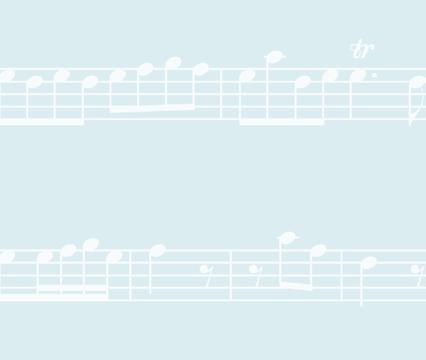





 By Jeremy Powers ’24
By Jeremy Powers ’24
THE HALLWAYS are alive with the sound of… music… and podcasts… and so much more. Thanks to the decades-long effort of audio visual technology specialist Zach Soares ’00 and more recent collaboration from music professor Jonathan Henderson and assistant director of buildings, grounds, and campus safety Regan Greer ’21, a new recording studio is expanding campus opportunities for performance, sound engineering, and a host of academic pursuits.
The intention for the newly completed space is to connect students and faculty across campus to the growing world of audio technology, spur the development of surprising connections between disciplines, and expand students’ skill sets and creative powers of expression.
“The recording studio is a really great laboratory for interdisciplinary learning, because these skills and resources in audio production can be taken up in all kinds of different settings,” Henderson says.
Soares, who teaches classes and independent studies in sound engineering, has envisioned a recording space since he started working for the school in 2005. He

holds a certificate in audio engineering that he earned while taking a break from COA in the late 90s, and has amassed a large amount of equipment over the years, some of which is now part of the new sound studio.
“Music for me has always been this world where you close your eyes and you’re transported to whatever the person is trying to create,” he said. “I just love bringing people on that journey; and that’s what I always tell my students, that it’s not about the end product, it’s about the journey.”
Soares’ course is popular with students working within the arts and elsewhere, and he sees it as a stepping stone for more focused courses in storytelling, music, and film.
“Audio is everywhere now, and students want to use it in so many classes,” he said. “I envision students using this space to do projects for just about every class taught on campus. I can’t wait to see it filled all of the time.”
The remodeling that made the project possible was led by Greer, who began working on the space over the winter break 2022. With the help of a small, dedicated crew of students, Greer knocked down a wall separating two practice rooms, installed a large window, painted, and redid the carpeting.
“It’s really satisfying to be able to work on a project for a few weeks and see it through, especially with students who don’t have much experience with carpentry,” she said. “It was a challenge to balance teaching and working efficiently, but we had a great result in the end.”
Currently only those students who have had training in audio tech and have worked through Soares’ and Henderson’s courses are able to access the equipment, but for those creators looking for help getting things recorded there are student teaching assistants who are ready to help out.
The new facility is providing intriguing, necessary options for students as they move through their self-directed learning pathways at COA, Henderson said.
“Communication through audio and video is a necessary skill for students to have because it’s often how people encounter ideas today,” Henderson said. “Audio design is a crucial mode for students to be learning alongside skills in written and verbal communication. It can be a key tool for communicating ideas.”
“It’s essential that we teach this to students,” Soares said. “Audio is a great way to spread the message of human ecology and express your ideas.”




The Legacy of COA Kim M. Wentworth Chair in Environmental Studies Steve Ressel

If we are lucky, we might have ice thick enough for skating by the end of the month. After you are warm from a skate, lie on your stomach on the ice to cool, watching the aquatic vegetation moving below… and maybe a painted turtle will swim slowly by?








Gather cranberries in bogs like the one surrounding Northeast Creek. Ripe berries should be hard to the touch and pop with acid in your mouth.
Hike the mountains on the east side of MDI, admiring the hills ablaze with color that map the path of the 1947 fire.



Scour fields and meadows for basking snakes. The old beaver impoundment on Breakneck Road is a good place to find smooth
animal tracks. Who is using the river bed? Fox? Mink? Maybe a fisher or bobcat?
In an attempt to escape tourists on MDI, go paddle the Allagash and meet new ones.

Drive slowly and watch for snapping and painted turtles crossing the road. You can find them digging their nests and laying eggs in the sandy road shoulders near fresh water.

Hike Sargeant Mountain with your binocs and fancy camera. As you get above treeline, keep a sharp eye out for snowy owls. Even if you don't see one, you will have enjoyed the most remote part of MDI in the most extreme season. Look for owl pellets too!

APRIL


Get ready for a busy month. Listen for what sound like large choruses of ducks in the woods– it is wood frogs breeding in vernal pools. Walk along the road on a rainy night and rescue salamanders and frogs from becoming roadkill. Bonus: Go check out the vernal pools on the top of Otter Cliffs, and watch the spotted salamanders' courtship dances through the crystal clear water.
With his unbridled love for amphibians, reptiles, snow, and ice, Steve has left a lasting mark on anyone who has spent time with him in the field. Steve not only teaches biology, ecology, and natural history, he lives and breathes it. He is always up to something. And his message is simple: Get outside and discover what is unique and wondrous about this particular time in this particular place. Then share it with other people.
It is clear to Steve that in order to have any hope of protecting nature, people need to keep getting hooked on it. Not just nature as a concept, but as a deep love and understanding of the animals and phenomena specific to where we live.


MAY




Head to Sunkhaze National Wildlife Refuge for a day of Maine herp diversity: snakes in the brush piles; painted turtles and newts in the pond; green, bull, pickerel, leopard, and wood frogs in the ditches; peepers and toads calling at night.



JUNE




Head over to Hamilton Pond to hear gray tree frogs calling. Catch them and let them climb up your arm with their sticky toepads!

do all this? Because when we're out in the wild, what we experience lingers long after the event is over. Joy derived from things created by humans—like sports or music—is wonderful, but it's over when the song is over or when the game is over. Nature stays with you.Hop on a plane to Costa Rica for some serious biodiversity overload. Don't forget your headlamp and an umbrella!
AUTHOR’S NOTE: When I came out of graduate school in 1995, my professional toolkit consisted of little more than standard neoclassical economics, though that was coupled with a personal thirst for knowledge and a desire to teach well in a school of human ecology. Over the course of almost 28 years, I found that more knowledge only led to more questions, which I integrated with the myriad questions from students about the (economic) world. In particular, I found new institutional economics (NIE) explained a lot of economic phenomena that neoclassical alone could not do…
so it became part of the toolkit. NIE was particularly valuable addressing inequality and social and environmental (in)justice, but then came new questions, particularly how so much inequality and injustice could exist in fairly democratic societies; in other words, why don’t things change? Why is change so hard to achieve? Those questions led to knowledge as far afield as complexity theory, moral psychology, and evolutionary psychology (which are all useful in explaining cooperation as well as inequality). The piece below started as a sort of “manifesto to myself” to explain
and reconcile some concepts and real-world patterns, with an eye toward eventually sharing these ideas with students. I’ve fleshed out the original version in hopes of making it a bit more comprehensible. Please note that this isn’t a draft of a journal article or anything like that; it is a collection of very useful ideas, connected together to try to make sense of perplexing and worrisome things in the world. As with all human ecology, it is a work in progress (and, as with a lot of human ecology, it benefited greatly from discussion with others—thank you Colin, Mike, Alisa, and Dan!)
THEORY explains a couple of things about change. First, medium- and long-term outcomes in nonlinear systems (which include economies and political systems) are essentially impossible to predict, meaning what actually changes, where we’re moving economically and politically, is impossible to predict. This also implies that directing systemic change in a big way is also inherently difficult, probably impossible to do with any accuracy; to say, “Let’s aim directly for point A” is pretty much to guarantee that point A won’t be where you end up. This unfortunate outcome is supported by the long history of most revolutions going horribly awry; US foreign policy also offers a case in point.
At the same time, in a different context, directed behavior still makes sense for individual agents. The notion of fitness landscapes (imagine hills and valleys, with the hills being better places to be) suggests that some directions of movement for individuals, firms, and governments will be better than others. Overall institutional change might be hard to predict or alter, but individual agents, cognizant of the institutional/fitness landscape (and that the landscape itself changes constantly, but much of it acceptably slowly), direct their behaviors accordingly, and at times achieve success (though as with hedge fund managers and social media moguls, they should also acknowledge a significant dose of luck).
Holding the first argument with the second is challenging, but understanding and integrating them probably has something to do with scale. The smaller the temporal and spatial scale, the more certain/aware the agent is of the fitness landscape, and the better they can navigate. The larger the scale, the more they are storm-tossed in a tempest of nonlinear, unpredictable change and outcome. Additionally, NIE economists would argue that the larger-scale institutional matrix is simply so tightly interwoven and mutually reinforced that it is much more resistant to change.
How, then, do you affect positive social change in a nonlinear world? I don’t think one will ever be sure, there will never be a roadmap… but the ineffectiveness of directed, big efforts doesn’t leave us empty handed. We may only have a modicum of control, direction, and determination at a small scale, but there’s a powerful context (and a bulwark of complexity theory) pointing out how small things can make big changes in the world. We can do small change, but that change can be networked for big, (semi-)coordinated change: networks are the answer. And like the plant that casts many seeds into the wind or douses many bees’ abdomens with a bounty of pollen, we do a bunch of networked things that all seem to make sense as near as we can tell, knowing some of them won’t create much change—after all, networks are also complex systems—but
some of them, in concert with the actions of others with whom we’re networked, could be a part of positive change at a larger scale. (This is really only the tip of the iceberg regarding networks… they are absolutely fascinating and amazing. Among other things, their fluidity and imperfections create very good conditions for evolutionary change.)
How should we network, what things should we do within our social networks, to foster change? As cooperation and taking care of each other, in many forms and guises—love, friendship, trust, empathy; loose groups and formal organizations; producing food together in the garden or the kitchen; pickup basketball and impromptu conversation—seem to have been essential for the flourishing of the species for well over a million years, our actions should point in these directions. I’d add that wonder and respect for the nonhuman world, our relationship to the living other and the complex web of support that sustains it, will also have a prominent role. We may not know exactly what to do, but we should probably follow these, our best instincts.
We have an advantage in this context, because networks and working together as equals is fun and meaningful, while the overreliance on linear, hierarchical approaches used by “the opposition” (a purposefully vague term) is not as fun, often doesn’t work very well, and has huge monitoring and enforcement costs. Humans actually thrive with a little bit of hierarchy (sorry, anarchist friends), but much of contemporary society (particularly businesses and governments) works on what might be called “strong hierarchy.” Strong hierarchy can be forced for a while at small temporal and spatial scales (sometimes with horrific large-scale systemic effects such as climate change) but is only acceptable at a large social level in an environment of fear and mistrust… which the opposition does its best to sow. Strong hierarchy, fear, and mistrust have a degree of short-term advantage in the fitness landscape, but we have to believe (or to bet) that they will always be an inferior strategy on the larger scale. I go with love and cooperation and wonder and creativity both because they’re fun, and because I sense they’ll be more successful at changing the world. Even if a lot of my change efforts strike out, I’ll still be wiser and healthier because of them.
While it’s not something into which I have delved formally, observation and experience suggests that, in their seeking to overcome their fear, some humans inevitably hurt and wound each other, producing other humans who want to hurt or wound, or are willing to do so in pursuit of power and prestige. So the opposition will be around for a long time to come. It may not seem like it, but we’ve had some success against them: there’s probably less hatred, less exploitation, less fear than there was 1,000, 100, and maybe even 50 years ago. We have a better understanding of how people get wounded, and why they seek power (usually in terms of money) even if it exploits or harms others. But of course our work in this realm isn’t done, there are still huge, daunting problems causing pain and suffering around the world.
And maybe it will always be that way; we also have to acknowledge that, even with all the fun and meaningfulness we can muster, and all the power of networks, we can’t be sure that we’ll get the world we’d like to see. It may be that there will always be too much woundedness, too much concentration of power, too many things already irrevocably tilted and wrong in the world. The tensions are there, the challenges are extremely daunting, and things could get worse before they get better.

Fortunately, our best chance for our success at making the world a better place is also what I have been calling fun, what we are drawn to do, what makes it worth getting out of bed in the morning, regardless of the uncertainty of long-term success. To borrow from Eduardo Galeano, utopia is always on the horizon; I walk two steps toward it, it moves two steps further away…but that doesn’t keep us from walking toward it. The purpose of utopia, of our hopes and dreams, is in the walking. The answer isn’t to despair, any more than it is to seek to overcome the pain and suffering through demanding nearly impossible and usually disastrous direct, large-scale linear action. The answer is in being fully human in the myriad wonderful (and painful) ways that we can… not passively or individualistically, but mindfully, emphatically, vocally, and together.
This may sound like I’m trying to end my discussion regarding change on a hopeful, philosophical note, but that is not the intent at all. My students will confirm that I have no qualms about ending on a depressing note; there’s no shortage of them in the study of the economy. Based on science, history, social science, and my experience (hey, that sounds like human ecology), this really is the best way and our greatest chance to get the world we want.
FOR THE PAST DECADE I have worked in translucent blues with the intention of bringing the outside in, translating experiences in the natural world to indoor spaces using color, light, and site-specific installation. My most recent series, The Portals, reverses this process, literally turning it inside out. The work consists of vivid blue sculptures, cast in studio, and installed in

remote natural spaces, encouraging us to consider our presence in a specific place at a specific moment in time while simultaneously considering the expansive possibilities of what might be next. The work is an invitation to explore uncharted territory, both internally and externally. The multifaceted series includes twodimensional photography, three-dimensional installation sculpture,

multidimensional NFTs, and conceptual gridwork. My hope is that The Portals, in their many forms, inspire a web of connection between the individual, the collective, the natural world, and the metaphysical beyond.
For more information, visit blakeneysanford.com
The Portals - Fog 4, California - 05.29.20 by Blakeney Sanford ’02.


DAN MAHONEY: What is the role of the Supreme Court in the United States?
BOB SEDDIG: One of the traditional views is that the Supreme Court is a magnet for minority rights and minority rights grievances because of the exclusion by definition of minorities from the majoritarian institutions. This is an old-fashioned view, though, because in many ways it antedates the pluralism of our society, and it’s simplistic to talk about Congress and the presidency as majoritarian institutions and the Supreme Court, as I said, a kind of magnet for minority rights. And by minorities, I mean all disenfranchised groups within society, not just based on race and ethnicity.
DAN: That is a great working definition to get us started.
BOB: I’m trying to make this fun, and I’m passionate about this stuff, but there’s nothing I can say right now to make it fun or attractive. There’s nothing I can do to make what I’m going to say optimistic about the future of the Supreme Court in the short run. There’s a lot of concern among all of us who are passionate, well, maybe not all of us, but many of us who are passionate about the Supreme Court are deeply troubled right now, not only about the overturning of Roe v. Wade, but also other other revisionist, ultra-conservative ideas about basic fundamental rights which go beyond reproductive rights and privacy.
URSA BECKFORD ’17: I agree with Bob and have the same concerns. When it comes to whether the Court protects fundamental rights, I think the first problem is that reasonable people disagree about what rights we’re talking about. Which ones do we think are in the Constitution? How do we define them? Are we talking about a woman’s right to choose to have an abortion, or are we talking about the rights of an unborn child? But even if you set that problem aside, looking at the history of the Court, it has not been a bulwark against violations of individual rights. Obviously, there are decisions that I think have had good effects, at least in the short term, like Roe, Griswold v. Connecticut, Loving v. Virginia, Obergefell v. Hodges, etc. But in the moments where the country has really been tested, in terms of whether we are going to hold fast to our ideals, the Court has largely failed. Decisions like Korematsu v. United States, where the Court said that it was constitutional to have internment camps for Americans of Japanese descent, or the espionage cases in World War I, where the Court said we could lock people up who opposed the government.
DAN: In drafting the Constitution the framers did not clearly define what the role of the Supreme Court would be. The Court was seen as necessary but their role was fairly ambiguous. How then, over the last 30 years, did the Court become the most powerful institution in the United States?
BOB: In many ways the attempt on the part of the Supreme Court to deal with the subject of slavery and to try to resolve the slavery question was the first major foray into making a public policy pronouncement in the guise of constitutional interpretation. So, it really hasn’t been in the last 30 years—or even I would say 75 years—that the Supreme Court has waded into the waters of policy choice. The Supreme Court taking it upon itself to try to figure out and resolve the slavery question represents a milestone, and a very sad one too, especially when you read the opinion and what the Chief Justice says about people of color in that opinion.
JAMIE MCKOWN: I work in the time period of the Dred Scott v. Sandford case in 1857. When talking about the evolution of the Court, people start with Marbury v. Madison [1803] and the precedent of judicial review. It’s not just about what’s happening around the Dred Scott decision, which was actually a pretty abysmal decision; also a very political decision in many respects. But coming out of that decision, the Republican Congress knew it had to correct the error of Dred Scott, which is how we got the 14th amendment. One of the first clauses in that amendment is supposed to rectify the question of citizenship: all people either born or naturalized are citizens of the United States.
What is really interesting to consider is that in the post-Civil War era, we see an expansion of the federal government vis-a-vis the states. You’ve seen this at various points in time in our history, most recently in the 1960s and ’70s. Whenever you see the national government expanding certain guarantees of constitutional rights, then you’re going to have these interpretation issues as to what that involves.
The jurisprudence around the 14th and 15th amendments has led to some of the most impactful questions that the Court has wrestled with over the years. But the evolution of the Court didn’t happen overnight, it didn’t just happen with Marbury. It happened as government changed, as the role of the federal government vis-a-vis the states grew, and the Court was asked to weigh in more often.
SARAH OTTINGER ’25: Just going off what both Bob and Jamie said, when I’m reading these cases from our current Supreme Court, the framework that I go into it with is always the idea that the Court is not a lawmaking body. That was never its purpose. A court is for judging laws, not creating laws. If I’m remembering correctly from Bob’s class, that was pretty much it, and that’s a really important thing to say. Also, the reason the Court was created that way was that it fits pretty well into the idea of checks and balances, which are integral to the way our government is run.
There’s nothing I can do to make what I’m going to say optimistic about the future of the Supreme Court in the short run.
In an ideal world, the Supreme Court and the other branches of government create a nice feedback loop. If you’re coming across this issue consistently, like people keep bringing the same case over and over again, that should tell Congress they need to pass a different law. In a sense, the Court can say let’s work to get these laws in place so the public will benefi t later on, but that can be abused too, and then the courts can create things like doctrines. Another problem is that if a court is leaning in a political direction, it is not incredibly challenging for it to rule on political ideology, rather than just a legal ideology.
BOB: That was really beautifully stated, Sarah. It’s diffi cult, and you pointed to this, to draw the line between interpretation and legislation by the Court.
URSA: When you read these decisions, Sarah, do you feel like the Court is making law?
SARAH: Kiara [Carman ’24] and I are in Ken Cline’s Environmental Law and Policy class right now. We read the West Virginia v. EPA case, which is a horrifi cally frustrating case to read. But I’m going to lean back onto Dobbs v. Jackson to answer your question specifi cally. When I read Dobbs with the framework that the courts are not a legislative body, it doesn’t feel like the Court
is creating law, but it does feel like a giant loophole. It’s really frustrating to read it because they’re not doing something that is beyond their scope but when you look at all the historical context and the precedents that have been set, Dobbs just does not add up. They fl at out ignored a lot of history and a lot of precedent.
URSA: If we can we go back to Marbury for a second, I think certainly there’s the makeup of the Court at any particular time, but also, as we touched on before, the amount of power the Court has. It’s not at all clear that the framers thought the Court should have the power or would have the power to decide these major social and political questions facing the country. Their current power, at least in my view, is inseparable from Marbury. Marshall was a brilliant politician who maneuvered the Court into having an enormous amount of power, but it’s not at all clear the framers intended the Court to be seen that way.

DAN: The question then becomes at what point do courts lose legitimacy?
JAMIE: It’s interesting because it also goes back to that point earlier, which is when we discussed the major political and social questions facing the country… the whole concept of what the country was at that period of time, right? The degree to which we have to constantly remember that when we talk about this kind of originalist thinking about the Constitution that some people approach jurisprudence from, the idea of the way we see the United States today is not quite the same way it was seen when the constitution was created. What was the country at the time? The questions the entire country was dealing with were really narrow and often related to things like interstate commerce, territorial defense, and questions about territorial law.

JAMIE: We can’t talk about its transformation in terms of how the Court’s rulings shape laws without addressing the change of how social movements approach the Court, because there is this argument, particularly after Brown v. Board of Education and Roe, that progressive movements—or particular kinds of political movements— saw the Court as a place to go. This is the argument put forward in The Hollow Hope that asks, If you have a finite amount of resources, where do you invest those resources? Are you in the streets, are you working at the state legislative level, are you hiring lawyers to go and sue in court?
This is changing how people focus their energies, because if you are of a particular political persuasion, instead of seeing the Court now as a place to go to check the abuse of the legislature, you’re seeing it not as a place to go, and instead you’re going to invest your money hitting the streets. I suspect there are a lot of people, whom maybe I would not agree with, who think the most activist decision ever was Roe to begin with.
BOB: For a long period of time, maybe beginning with Brown, the abdication of responsibility for governing by Congress, particularly, shifted the weight, or the locus, of public policy making increasingly to the judiciary. One of the reasons that the Supreme Court has become so powerful is because of the absence of effective governance on the part of, particularly, Congress. I think of Congress as—and this brings up the title of a book I read a long time ago by a senator from Pennsylvania who called Congress the sapless branch. This was a book written in the 1950s, and Congress is even more sapless now than it was then. What am I saying? I’m saying that the gradual, but important and significant amassing of power within national institutions by the Supreme Court was probably inevitable with the abdication of responsibility on the part
of other institutions. But now it’s come around and it’s bitten us in the behind, because the power that the Supreme Court has to create these important fundamental rights declarations also means that it can all of a sudden take them away. And I wasn’t expecting the taking away of the basic holding in Roe. I don’t think the Chief Justice was either. So where do we go? Jamie addressed this, I think, very effectively. Where do we go now?
KIARA CARMAN ’24: Also, when looking at the courts, they go through periods of time where they’re expanding rights and where they’re taking away rights they have previously afforded. Right now, we’re in a period of time where we’re seeing courts take away rights that they’ve previously granted through their judicial review. It’s interesting to be watching that and thinking about that. Actually, we talk a lot in environmental law and policy about the politicization of the Court, and how we hope cases we’re reading do not go to the Supreme Court right now.
Right now, progressive groups are using the state courts as the means for judicial expansion of certain rights because they are too afraid that if these cases go to the Supreme Court they will actually diminish rights they previously granted. There was a case recently that the Supreme Court decided and the opinion came out this summer. That opinion overlooked 200 years of Native American legal rights and precedent that other courts had been repeating since the Marshall trilogy.
JAMIE: The case that y’all were mentioning, Kiara, was Oklahoma v. Castro-Huerta, which is the case on Native American law that just happened. What’s fascinating about that case is Justice Gorsuch wrote a dissent which is on fire. And I can’t believe I’d say, wow, that’s a great Gorsuch decision… He makes one of the best examples of the point about the political nature of the Court, where he’s just like, Y’all threw reasoning out the window; this is ludicrous. Which is ironic coming from Neil Gorsuch.
JAMIE: I’ve read some really provocative arguments that Roe actually, in some respects, stalled out a kind of fight that was being taken to individual legislative levels. What Roe allowed was not only for conservative groups during the post-Roe era to raise tons of money, but, in the process, we get the abortion-access question with many thinking that as long as Roe existed everything was fine... It was kind of a quiescent effect, right? However, in a lot of places the right to an abortion was never guaranteed because people did not have adequate access to the procedure or even to clinics.

KIARA: I defi nitely, at least observationally, have seen how a lot of younger people and the younger generation don’t see the Court as something that is actually legitimate. Especially in the post- Dobbs world; that case has really delegitimized the Court. For us, the Court is not an actual place to go to solve diffi cult
issues. The fact that we see it as a delegitimized, nonfunctioning body within the government is a big problem. It will be interesting to see what the repercussions are as people grow older and become more politically educated and are able to vote, because if the Court continues in the direction it is headed there will be a lot of political backfi re from the younger generations.
DAN: According to a Gallup poll released in September 2022, those reporting a “great deal” of confidence in the Supreme Court was down to 12%. How do we as a country move into the future with that number?
JAMIE: Another poll, conducted by Pew in September 2022, has demographics broken down by age and it’s astonishing. This goes right to the point Kiara made earlier. Young people between the ages of 18-29 who expressed a “very favorable” opinion of the Supreme Court was at 7%.
SARAH: I’m a secondyear student at COA. I came to college young; I was 17 when I started. I’m fully Gen Z. Our generation is—say whatever you want about our generation, but we are terrifyingly educated, because when you’re raised with this much media, you know your rights probably a long time before other generations did, even if you don’t know them verbally. I didn’t know what the Constitution said, but there was a lot of discourse online about what was legal and what was illegal. By the time I was 10, I was on social media and getting to see people’s reactions to their lived experiences. I was 12 when Trump got elected. All of my teenage years have been consumed by watching this steady decline into chaos, so my perspective is kind of abysmal. I don’t remember a time when it wasn’t this confusing. There was the 2008 recession,
there was my childhood, and then there was Trump.
Our generation is so out of touch with the idea of actually trusting the government at this point. I don’t know anyone my age who’s like, Oh, the government’s got it. We’ll leave it. How’s your day going? This is not to say that we believe we’d be great if there was no government, but we have been raised with this feeling of chaos and all the adults around us being like, Oh God, this is uncharted territory. And we’re like, Whoa, everything is totally new? That’s kind of terrifying.
KIARA: The power of the internet has really changed the way that courts are viewed because we have easy access to all of the opinions they write. Once opinions come down, people online will read them and break them down into digestible information for the rest of the world to see and understand. That’s how a lot of online activism gets spurred into real activism on the streets.
URSA: When I think about the low confidence in the Court, here’s what I don’t think. I don’t think that people are sitting around the kitchen table saying, If only the Court understood that there’s an implied right to privacy in the Due Process Clause of the 14th Amendment that protects a woman’s right to choose to have an abortion. I don’t think they’re saying, I would have confidence in the Court if they just understood that the Second Amendment test should be a balancing of government and private interests rather than a test that looks at the

nation’s historical tradition of firearm regulation. I think the reason there’s such low confidence in the Court is that people are fed up with the fact that nine elites from Harvard and Yale who are fairly out of touch with what life is really like and are totally unaccountable are making decisions for the rest of us.
JAMIE: But to be clear, that’s exactly the messaging that you got from pro-life organizations after Roe, which is, I can’t believe these elites are making decisions for the rest of us. That same argument is exactly what people raised money on for so many years.
It’s fascinating; according to that same Pew study, a majority of people now feel the Court is conservative and only something like 7% think it’s too liberal. I want to meet those people, by the way, that 7%. I want to know who’s like, Yeah, this Court is too liberal.
DAN: Are you sure you want to know?
JAMIE: They’ll be in my Conspiracy Theory class in the winter term.
DAN: Can you see the conservatism of today’s Supreme Court as a corrective to the progressivism of the Warren Court?
BOB: Well, you can assess the decisions from the Supreme Court over a long period of time in terms of cycles. And there are many, many people who enjoy talking about the cycles of US history. I’d like to go back though, if I may, to some of the comments about
People are fed up with the fact that nine elites from Harvard and Yale who are fairly out of touch with what life is really like and are totally unaccountable are making decisions for the rest of us.
the younger generation. When you were speaking for the current generation, let’s say college students or high school students, you made some generalizations which were kind of jarring me a bit. If you went to rural Wisconsin, let’s say, or rural Iowa, rural Georgia, and met with your generation of students there, would they concur with what you were saying before?
SARAH: Just so you know, I am from rural Wisconsin...
BOB: I know, I know. Tell me about your generation in Park Falls or Chippewa Falls—
SARAH: Chippewa Falls, yeah, Wisconsin, born and raised. I was home-schooled for half my life. I was publicschooled and privateschooled too. I knew from a young age that we were in a pretty Republican-leaning area. Growing up, my dad was a Republican, my mom was kind of a fence sitter, and my grandparents were Republicans. Pretty much everybody in the area was.
I didn’t think much about politics as a kid. But one thing that did consistently surprise me was going to school and seeing kids whose parents I knew had Trump signs outside their house leading debates and talking about feeling politically disenfranchised. It didn’t mean that they weren’t Trump supporters or that they weren’t Republicans. It didn’t always correlate to where they were on the political spectrum. By the time I was
12 years old, I was having heated political debates with my peers, and I don’t know how normal that is.
KIARA: I grew up in upstate New York in a very red area. I grew up distrusting the government too and yet my entire family is incredibly conservative. But there’s great distrust of the government and the Court there from both blue- and red-leaning people. Echoing what Sarah said, seeing this general distrust of the government and the Supreme Court, no matter what political side of the spectrum you’re on, has been something that I have seen my entire life.
JAMIE: You want to talk about a gray area with the moment we are living through, I have one. I’m very concerned about where we could be in terms of the Court, because of the points Kiara and Sarah and others have made, if the Court lacks legitimacy and is going be asked to resolve election cases, that is a train wreck waiting to happen. We are dealing with very murky territory here with little, if any, precedent. If you look at Bush v. Gore, that whole decision happened in part because Gore was just like, You know what, cool, I’m out. Trump exposed that if you keep pushing far enough, the framework begins to crumble. The courts then become arbiters in all kinds of challenges to things like absentee balloting, signature verifi cation, drop boxes, elector distribution.
 Expansion of the Supreme Court
Expansion of the Supreme Court
It’s like a slinky that just keeps expanding and I know it’ll bounce back up eventually. I just don’t know if it’s going to hit the floor first. That’s kind of what it feels like.
And if the public doesn’t have any faith in the courts…
BOB: I agree. It’s not only the gumming-up factor. It’s the prospect of the number of cases of litigation that are likely to come forward to institutions that now lack the legitimacy to make a sound decision. It’s just a nightmare coming from several different directions

JAMIE: It could be a very ugly, potentially violent situation, to be honest.
DAN: Has there ever been a moment like this that the Supreme Court—or courts in general—were able to sort of shine through a little bit and provide some stability, or is this something that’s really unprecedented?
BOB: I don’t have anything which is comparable, but during the
New Deal period in the 1930s, when the Supreme Court finally came around to accepting the role of government regulation of business— which is a very different issue from what we’re talking about—there was a kind of shining through then. But I think we’re in uncharted territory in many, many ways now. Not only with respect to doctrines and decisions, but I think others articulated this so beautifully with the acceptance of what the Supreme Court might rule; its legitimacy.
KIARA: What’s interesting about expanding the Court is it gets back to election laws and who’s allowed to vote and the disenfranchisement of specific groups of people. So, is the expansion of the Court an actual legitimate thing that we can even do right now, given the current state of politics? Also, are there people in Congress willing to go down that road, that can actually get it through? And if we can’t get it through, does that just further delegitimize the government?
BOB: Not a very happy thought.
DAN: So let me ask this: where are we in the future, say 10, 20, or 50 years from now?
SARAH: My brain is like a consistent tug of war between the points just made. The despair of that feedback cycle. It’s like a slinky that just keeps expanding and I know it’ll bounce back up eventually. I just don’t know if it’s going to hit the floor first. That’s kind of what it feels like.
JAMIE: For me, I’m just watching these midterm [2022] elections really closely. Right now, Republican organizations are like the dog that caught the car bumper, right? They got what they wanted but what does that look like? I am waiting to see to what extent there have been people who may have considered themselves conservative but were in favor of a woman having control over her own reproductive rights, and were able to talk pro-life or abortion bans because Roe meant it would never actually happen. I grew up with people like that. Republican voting, particularly women who were like, They’re never going to get rid of abortion rights, right? And now that it’s on the table at a state legislative level, what will that look like for those voters?
lot of uncharted territory
There’s a lot of uncharted territory we’re heading into, both in terms of the courts and in terms of the political system.










URSA: There’s this Judge Learned Hand quote. He obviously spoke in the gender binary of his time, but he said, Liberty lies in the hearts of men and women. When it dies there, no constitution, no law, no court can even do much to help it. While it lies there, it needs no constitution, no law, no court to save it. We have a choice here. I actually have a lot of faith in people because when I travel across the country, people are just really amazing and they don’t look anything like how they’re talked about in the media, or in the polls, or by the pundits and politicians who use them to make various points. I actually have a lot of faith in people going forward.
JAMIE: It’s a fascinating question Ursa brings up about the role of the public. Political scientists have these debates about if courts follow the public or if courts shape the public. And the idea of the public mind—I’ve been spending a lot of time reading about Madison and the public mind, and Madison says that the public mind, whatever we consider that to be, is the last check or bulwark that ensures what we would call rights… Because the Constitution is just a flimsy piece of paper if there is not public sentiment behind ensuring it is upheld.

This article has been modified from the print version.

OKYO’S HAND guided the flintburin around the shape of the first tallantlered, smooth lines flowing from its head, held high, down the curve of its neck and along its back and around its rump.


...now I’m knowing what my hand felt when it traveled along Marita’s body, the smooth fl ow of her strong back into the breadth of her hip, fullness of her rump...
When he began, his fatlight provided enough light to incise the outlines of one tallantlered after another as they walked across the wall. Later, the light of sola came to the wall. As he carved, none of them were the same. Each had a different posture, some grazing, others with head up and alert, looking in one direction or another, some striding forward. A bull led, stretching its head upward, its mouth high and open, antlers laid along its back, its power told in every way. Though the stone was silent, Okyo could hear the loud whistling challenge coming from its throat. Seven cows followed, separated by irregular spaces. Each was as long as one of his arms. He stopped carving when they stretched across the entire length of the smooth, lightcolored wall. By then, sola had been shining into the cave for many horas.


...enough for this solalight, my hand is becoming stiff, sore...even with the light of sola, it is hard to see all of the lines I’ve carved... next solalight I’ll use earthlife... these tallantlered will become easily seen, even in the flicker of a fatlight, if ever one is held in this cave...but, do I have enough earthlife to paint all of these lines...much will be needed, I don’t think I brought enough...where we
dig earthlife is far behind me now, I don’t know where to get any near here...at least I have fat from the shortantlered to mix with what I do have, then I’ll know how much I can paint...

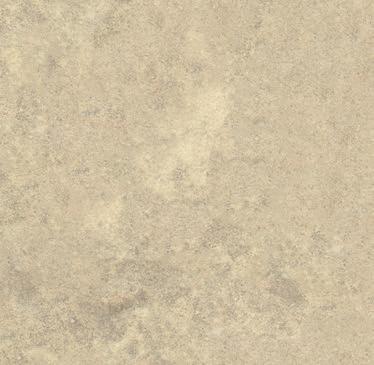
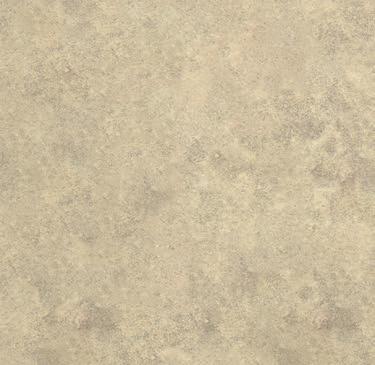




When he went to his basket and took out the lump of earthlife, Okyo realized he did not have enough to paint entirely around the tallantlered outlines. His mindeye had seen the incised lines cut by his flintburin completely filled with earthlife. That would not be possible. His mindeye began seeking other ways to paint the tallantlered while he kindled a fire and roasted some of the shortantlered meat.



The answer came to him while he slept and his mindeye wandered through the sky with luna and the sparkeyes. Usually at firstlight, when he awakened, whatever his mindeye saw while he slept blew away as quickly as snow before a gust of wind. But this firstlight, his mindeye held what had come to him during the lunalight.
...to completely fill the outlines to tell power with earthlife isn’t necessary, isn’t even respectful...earthlife would surround them, bind them, color them with our power, not theirs, make their power into mine...offend their power by such control... yes, we kill some for meat, but leave most free to
live between ridge and forest, as their power leads them...to tell how the tallantlered and Santanda have found this way to live together, it will be better to place dots of earthlife around the outline...power can fl ow through the spaces between dots, in and out between the tallantlered and the Santanda, making one immense power...and, they will look like newborn tallantlered, lines of white spots along their bodies... the earthlife spots I will paint will share the borningpower of the tallantlered with that of the Santanda women...




































































For the last several years, the amazingly talented Hannah Stevens ’09 has been building, categorizing, and digitizing COA archives in the Thorndike Library.





If you have documents or images you’d like to add to this important collection of ephemera, please email archives@coa.edu.
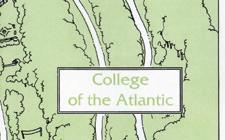














1973
“Greetings from Oregon,” writes SARAH BROWNELL. “Since my time at COA in the early ‘70s, I have moved, traveled, remarried, and gotten my higher education by experience and living well. I was Sarah Jennison, married to Andy Jennison, who attended the very first year COA was open. In April of 2022, my current husband and I spent a few hours on campus finding all my old haunts and being amazed at the changes. Most special to me was touring The Turrets, which was basically a condemned property when we lived there in what is now called the Peach House or the Gate House. Such a beautiful restoration! I now live on the Oregon Coast with a large population of gray whales and dramatic scenery. I would love to hear from any who remember me.”
sfbrownell@juno.com

SUSAN APPLEGATE is still enjoying being retired. She is composting, gardening, baking bread, sharing yoga, and living lightly on planet Earth—and missing Bar Harbor!

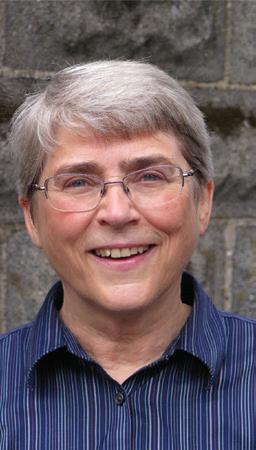

SALLY MORONG CHETWYND
launched Brass Castle Arts full-time in January 2022 (after decades of very part-time wordsmithing). Sally writes, “I began business networking in April 2021, and now swap referrals with entrepreneurs worldwide. The income isn’t full time yet, but it’s growing. I’m headed up the learning curve. In June, a writing group I’m
involved with launched senior write-ins, with workshops in poetry, memoir, and fiction. Response has been big! They resumed in January 2023 with even more participation. The seniors have discovered that they have amazing stories to tell. My current work-in-progress is about Nicodemus, a member of the Jewish council that put Jesus on trial. What was his ‘take’ on the whole Jesus phenomenon? Researching Jewish life then (domestic, economic, social, religious, political) and applying details to enrich my fiction is great fun. In September, a new nonprofit asked me to join its board of directors. Trooper Black Foundation will benefit Maine first-responder families whose members have been killed or permanently disabled. Related to this, I’ve relaunched work on a nonfiction book Beyond End of Watch: Police Families Surviving Line-of-Duty Deaths. I live in Wakefield, Massachusetts, with my husband of 37+ years, Phillip. Keeping out of trouble—or in it!”
In June, she became a grandmother for the first time.

ANDREA LEPCIO became the health and fitness director at The Neighborhood House in Northeast Harbor in June 2021. “I run the gym, offer personal training, and teach yoga, mat Pilates, and Tai Chi. I also write plays and was honored to win the Maine Literary Award for Drama for my solo play, Human. I teach periodically at College of the Atlantic and for the Dramatists Guild Institute. I live in Bar Harbor and welcomed my 87-year-old mother to live with me in the fall of 2022.
BARB ACOSTA was busy this year organizing the Mayors’ Monarch Pledge in Trenton, with the goal of rebuilding habitat and educating residents about pollinators. She continues to serve as chair of the Peace and Social Action Ministry at the Ellsworth Unitarian Universalist Church. In her spare time, she hikes with Footloose Friends on MDI, paddles her kayak, runs a short-term rental, and manages her organic garden.
STEVE DONOSO lives between two long-dormant volcanoes in Cotacachi, Ecuador with his wife Rebecca, their adopted former street dog, Bilbo, and their nearby, retired horse, Sundance. Steve writes, edits, publishes, and photographs. He is the founder-editor-publisher of the pulp-fiction journal, The Shadowed Circle (theshadowedcircle.com), which focuses on the mysterious character known as The Shadow, created by writer and magician Walter B. Gibson. Steve recently edited Arlene Anderson’s nonfiction book, Hard Fall, High Bounce: How adversity and resilience led to my decade of global adventures—and misadventures, and also published his sixth black & white infrared photographic calendar, Sierra Images of Ecuador. Steve can be reached at stevedonoso@yahoo.com

SUSAN FREED writes, “I’m still working for the County of San Diego as the energy and sustainability project manager. We have a lot of innovative programs getting started lately. In addition to building zero-netenergy buildings (which we have been doing since 2016), we are working on embodied carbon reduction in new construction projects, electrification of our older facilities, and lots of EV chargers to transition the fleet. Our next challenge will be wastewater reuse, which is much harder to do.”
CYNTHIA JORDAN FISHER is still summering in Lubec, Maine, her family’s haunt since her childhood. She’s been living in Charlottesville, Virginia for the past 30 years, and has been busy raising two daughters and supporting families and their children (0-3 years old) with various programs she created using Montessori as her axis. Lately, she writes, “I have been working within a nonprofit I founded four years ago, supporting under-resourced families through doulas during the first 40 days after birth––nearbybaby.org I took a break from that to design and build a tiny house in my backyard last summer and fall. Loving living small. I welcome visits by other alums—I do have space for ya in a bigger house nearby!”
CHERYL ANN JOHNSON completed a Sustainable Agriculture Crop Growers certificate after retiring from 30 years of federal service and is now taking classes
in an Ecological Landscaper program. She is hoping to enroll in Master Gardener training later this year. “In the meantime, I enjoy propagating and growing native plants at home,” she says.
School. It is especially meaningful to share this with Charlie.”
BEN THOMAS and his wife Kate have entered the empty nest stage now that their oldest son, Gareth, has bought his own house. This summer their younger son, Gawain, and his wife Sara finally had the wedding party they missed because of the COVID-19 shutdown. Ben writes, “I’m still doing residential contracting, but my real love is music. I moved from strings to horns about 15 years ago, and I’ve been playing tuba in bands ranging from New Orleans Jazz to R&B, and all the way to the Balkans. I’m proud to have made a lot of noise and helped raise spirits with a protest band through the Trump years.”
LIZ CUNNINGHAM and her husband Charlie recently moved from Berkeley, California to Rockport, Maine. “We are both very excited to connect with conservationists and regenerative agriculture advocates in the mid-coast Maine community,” she says. “I am at work on two new books and look forward to being a part of conservation efforts on the Maine coast. It’s an amazing experience returning to Maine and reconnecting with my experiences at COA and the Hurricane Island Outward Bound

After 35 years of owning and operating Camp Runoia in Belgrade Lakes, Maine, PAM COBB HEUBERGER has retired (well, partially) and is enjoying showing horses and adventuring with Mark and the dogs. “Ran into PETER JEFFERY ’84 at Common Ground Fair, and spent a fun day with JULIE ERB ’83. PETER WAYNE ’83 remains a constant in my life as well,” she writes. “Fabulous to keep the COA connections going.”
PETER HELLER is so happy to be living in Maine again. He writes, “My wife and I have been in Franklin since September 2020, when the pandemic actually provided the blessing of helping us realize we could finally leave NYC. I’ve been successfully running my consulting business (Heller Fundraising Group) from the woods, and even supporting the local economy by hiring Maine people in addition to our NYC staff. Looking forward to more time off in 2023!”

After nearly 20 years as a reporter and editor on the news staff of Science magazine, DAVID MALAKOFF took on some new duties in February, becoming the global journal’s international news editor. That meant shifting his focus from covering how

 Clockwise from top left: David Malakoff ’86 with his wife Amy; Ben Thomas ’82; Susan Freed ’80 (right) with friends; and Liz Cunningham ’82 with her husband Charlie.
Clockwise from top left: David Malakoff ’86 with his wife Amy; Ben Thomas ’82; Susan Freed ’80 (right) with friends; and Liz Cunningham ’82 with her husband Charlie.
scientists and governments interact in the United States to how that sometimes testy relationship plays out in other nations, including the rising scientific powerhouses of China, India, and South Korea. He’ll remain based in Washington, DC, and invites COA alums and students to stop by for coffee or lunch—contact him at Malakoff@ comcast.net. When he’s not working with his far-flung network of reporters, you can find him out birding with his wife, Amy Young, or whitewater kayaking on the Potomac River.
ELENA TUHY WALTERS has been promoted to senior attorney at the Columbus City Attorney’s Office, where she has been working since July 2019. She, her husband Carl, and their daughter Evelyn are still living in Columbus, Ohio.
CLARK LAWRENCE
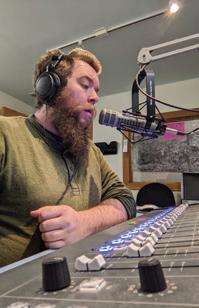
writes: “Hollington’s Florilegium is a new book coming out in March of this year. It is a COVID baby with two dads; David Hollington (a painter from London) and some irreverent, guesthouserunning, pumpkin-growing, goatherd garden writer who lives in Italy—me. Our A-to-Z book of plants (Hollington’s idea) came about because he couldn’t do art exhibitions in galleries (or even leave his home and studio in north London) during
the pandemic and I had no guests here at La Macchina Fissa near Mantua (BTW, thank you COA friends who helped me through 2020 by renewing your 10-euro memberships or sending donations). A is for Aquilegia and Z is for Zinnia, but the rest will remain a surprise. A miracle: Our publisher in Milan (Libreria della Natura) usually does serious science/nature books with photographs, but was willing to take a chance on our art book and publish something more humorous and light. They agreed to do not only a big A4 format Italian version with prints almost the size as the original paintings, but also their first English book!”
1995 SCOTT DICKERSON published his first novel, Telling Stone (Maine Authors Publishing, 2022). Read an excerpt on page 51.
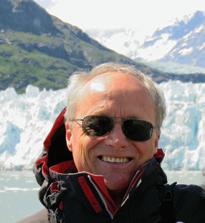
1996 JASON RICH is celebrating the fifth anniversary of his solo legal practice advising solar energy project development clients through the ups and downs of the industry. Jason also recently celebrated the completion of his first marathon at the 19th annual MDI Marathon with his wife Erika, son Elliot, and daughter Azalea. Elliot is currently a first-year student at COA. Contact Jason at jason@jasonrichlaw.com
CEDARBOUGH SAEJI continues to teach at Busan National University in South Korea, and lives just a short walk from the ocean. Bike rides allow her to keep track of the activities of local fishermen and freediving women, and what is in season (the best time of year is the seaweed harvest when whole coastal villages are covered in drying fronds and the aroma spreads for miles). Korea’s mask dance dramas were listed by UNESCO at the end of 2022; unfortunately, Saeji’s book on the same won’t be out until 2024 (although articles and book chapters, mainly on K-pop, come out regularly).
1998 In March, SUE SPOELHOF joined Northeast Harbor firm WMH Architects as senior Archicad technician, filling a role previously occupied by the late JANI MESINIEMI ’13. In October, she was elected board president of the Mount Desert Chamber of Commerce, where she serves with vice president JENNIFER JUDD-MCGEE (’92).
2005
SARA LEVINE has been living and working on MDI since 2015 as a massage therapist. In July 2022, she and partner Derrick Harrison welcomed their son Bowen. Her baby shower was a happy collection of







COA alums and their children, including KATIE DUBE ’00, CHRYSTAL SEELYSCHRECK ’03, AOIFE O’BRIEN ’05, SARAH BOCKIAN ’05, MARY RAIKES ’02, ALANA BEARD ’03, MARJOLAINE WHITTLESEY ’05, SANDRA WALCZYK ’06, KATIE FREEDMAN ’05, JAIME BERANEK ’00, and ANNE CZECHANSKIKNEELAND ’06.
BENJAMIN POLLONI and his partner are finally moving back to Maine. “My career with the National Park Service started at Glacier NP in Montana. I returned to Acadia for a few years before moving to Fire Island National Seashore in New York. My next park will be Katahdin Woods and Waters in northern Maine,” he writes. “Come visit!”
got stranded on the motorcycle a couple of times, but each time we were able to overcome our obstacles.” And now, for their next adventure, Marisa and Tim will be headed to the tropics on the other side of the globe. You can find their journeys at 2Up and Overloaded on YouTube and other social media platforms.
CAROLYN SNELL and her partner
Darryl welcomed baby Cedar Ferdinand Snell Sargent in July 2022. She writes: “We are farming here in Buxton, especially cut flowers, and working on a statewide floral cooperative for aggregating and distributing locally grown flowers to Maine florists and designers.”
JULIA WALKER
THOMAS and partner
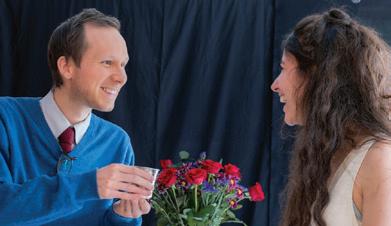
to add to her wardrobe in January 2023.
ASHLEY ADLER and her husband Justin joyfully welcomed baby Oliver Robin AdlerPaice on September 5, 2022.
MICHAEL DIAZ-GRIFFITH has a new book coming out about young collectors of antiques and historic art. The New Antiquarians: Young Collectors at Home will be published internationally by Phaidon/ The Monacelli Press in June 2023. He continues with The Winter Show and Sir John Soane’s Museum Foundation as a volunteer, but his “day job” is now with the Design Leadership Network, a national trade organization for architects and interior designers, which he leads as executive director & COO.
ALONSO
MARISA GLASS and her husband Tim Notier continued their epic motorcycle ride around the world by reaching the top of Alaska in the summer of 2022. “It was cold up there in Deadhorse,” she writes, “the farthest point north anyone can go by road in North America, but the sensation of riding up to the Land of the Midnight Sun was indescribable. Along our journey into the Arctic, we came across bears, caribou, and musk oxen. We ran out of gas and
Adam welcomed son Silas in April 2022. They reside in Bar Harbor where Julia was recently named visual storytelling and creative projects manager for Friends of Acadia.


AMANDA SPECTOR and PETER
JENKINS ’09 welcomed their daughter, Rosa, into the world on September 25, 2022 in Burlington, Vermont. She enjoys walks outdoors in the baby carrier, squirming in the baby bathtub, making eye contact, and smiling at people. Faculty member John Anderson personally delivered a COA onesie

DIAZ RICKARDS ’12 continues his painting practice in their adopted hometown of New York City, and they hope to visit Maine this summer, combining Michael’s book tour with visits to COA friends and faculty—and vacation.

DIANA ESCOBEDO LASTIRI had a baby! She writes: “Her name is Lana and she’s my favorite New Yorker! Lana arrived during a cold spell on December 25, 2022, giving her dad (Daniel) and me the greatest happiness and love we’ve ever known.”

NEITH LITTLE is currently living in Maryland with her husband Andrew Davis and their two year old, Eloise. Neith is working as an agricultural extension agent, serving farmers in Baltimore City.
CECILY SWINBURNE is happy to be back in the MDI area. She’s working as an emergency physician at Northern Light Eastern Maine Medical Center and per diem in Bar Harbor. She is also the medical director for Acadia National Park.
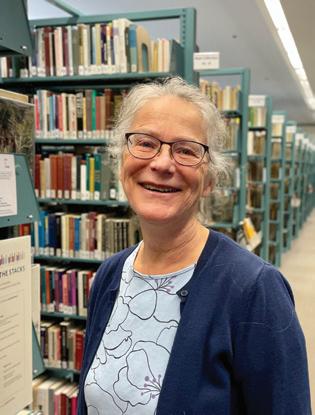


PHILIP B. KUNHARDT
IV writes that he got a new job: “Just started work as a construction project manager for Natural Areas Design & Construction at NYC Parks––a bit higher pay, and now I’m overseeing contractor restoration projects in wetlands, grasslands, and for green infrastructure instead of just forest projects.”
ZACH WHALEN married Annalise
Pforr in Edinburgh, Scotland, in August 2022. This was followed by a reception in Boston later in November, celebrating with COA alums at both events. They have since moved to south Florida to work in underwater filmmaking.
In January, MARISSA (ALTMANN) BALFOUR
joined The Nature Conservancy in the newly created role of corporate
engagement advisor, biodiversity & nature. In this position, she will be working with companies toward positive outcomes for biodiversity through business practices and value chains. Marissa is in her second year as an Emerging Wildlife Conservation Leaders Fellow and is spending a few months in Falmouth, Massachusetts, where her husband Nick is working with Marine Imaging Technologies. In her free time, Marissa enjoys cooking, photographing fungi, and watching Drag Race with her cat, and has recently gotten into Legos.
LAUREN BENZ is a co-artist of the Black Rock Station and recipient of a 2022 Burning Man Arts Honorarium grant. The Black Rock Station is a historical recreation of a 1930s-era train station serving the residents of Black Rock City, with a shifting, multimedia interior, and ghost trains heard but not seen. After the 2022 event, the Station has been reinstalled at The 360, a new makers’ ranch for sustainability and collaborative projects in Gerlach, Nevada. More info at blackrocktrainstation.com and instagram.com/blackrockstation
ERICKSON SMITH got married to Katherine Cavanaugh in October 2022 and began a new permanent job as a wildlife specialist with Jefferson County Open Space in Colorado.
SHIR KEHILA graduated with an MFA in creative nonfiction & literary translation from Columbia University. She and NATHANIEL HILLIARD ’13 were married in December 2022 by their friend, Shira Singer.
Several months after graduation, in the midst of the first swing of the pandemic, STEPHEN DOWDY immigrated to Canada (at first with a temporary visa to bake bread; he now has permanent residency). He shares, “In 2021, Lily and I got married! We eloped with the help of a few friends, a canoe, and a February snowstorm. I made pizza for everyone. We have settled in a cute apartment cluster in the North End of Halifax, living collectively with seven others. Lily is the co-artistic director of a regional theatre company called Gale Force, among other things. I work as a solar installation technician and I love it. Come visit and/or write a letter!”
PEPIN MITTELHAUSER became the digital media coordinator at WERU Community Radio 89.9FM, is the co-host of the Celtic music show New Potatoes once a month, and hosts and produces the public affairs show NextWave Radio Hour, which focuses on the stories of young people in Maine.
JILL BARLOW-KELLEY Director of internships and career services 1984-2023 JANE HULTBERG Director, Thorndike Library 2003-2023In spring of 2022, William H. Drury, Jr. Chair in Ecology and Natural History JOHN ANDERSON took nine students to the Northeast Natural History Conference in Albany, New York, where they presented papers and posters on their work on the COA islands. Summer was another busy season at the COA Alice Eno Field Research Station on Great Duck Island, with a team of six students working on their own projects and assisting in long-term data collection. John was also a co-author on a paper in the journal Waterbirds on the importance of natural history. In the fall of 2022, John and two students traveled to Corpus Christi, Texas, to present their Great Duck Island work and to meet with alum KATE SHLEPR ’13, who has been serving as secretary to the Waterbirds Society in addition to being a Knauss Fellow in Washington, DC working for the House Transportation Committee.
After over two years in production, The Bloody Room, written and directed by Joanne Woodward and Paul Newman Chair in Performing Arts JODI BAKER and T.A. Cox Chair in Studio Arts NANCY ANDREWS, premiered on July 9, 2022 at the Maine International Film Festival. Nancy was an artist in residence (remotely) at The Film/Video Residency Program at the Wexner Center, where she supervised the editing of The Bloody Room with editor and sound mixer Paul Hill. The project
was shaped and shot with a fearless team— PIETRO CASCIA ’22, LETA DIETHELM ’21, GABY GORDON-FOX ’22, LEELOU GORDON-FOX ’21, CAMDEN HUNT ’22, ANIRUDDHA JAYDEOKAR ’23, SOPHIE JOYCE ’22, SIMONE E LEPAGE ’23, ABBY JO MORRIS ’21, ANNA PARSONS ’23, GWEN SHOPE ’21, DANYLO SHUVALOV ’22, GOYA VAN DEN BERG ’21, THULE VAN DEN DAM ’21, W. W. DISAL LAHIRU ’22, and HANNAH WILLIAMS ’23 —who were all part of the Horror Film course taught by Andrews and Baker during the winter of 2020. Added to this illustrious group were Eve M. Cohen, director of photography, and Mike Mislan, gaffer, who both traveled from Los Angeles, and BEN NIMKIN ’08, sound recordist.

Nancy was invited to be a visiting artist at HewnOaks (hewnoaks.org) and attended for 10 days in late June/early July 2022. After more than a year in production, Nancy completed an album with Baltimore recording artist Linda Smith, mixed and co-produced by ZACH SOARES ’00 The album, A Passing Cloud, came out on March 17, 2023.
Partridge Chair in Food and Sustainable Agriculture Systems KOURTNEY COLLUM joined the board of the Bar Harbor Food Pantry in April 2022.


Kourtney also served as a partner on the MDI Food Access Project, a collaboration between Open Table MDI, The Bar Harbor Food Pantry, Healthy Acadia’s Gleaning Initiative, Island Connections, and the COA Beech Hill Farm Share the Harvest program. The MDI Food Access Project provides free, healthy meals, non-perishable food, and fresh produce to residents of Mount Desert Island, the outer islands, and Trenton. The food delivery van makes several scheduled stops each week. This year we were able to fund three COA interns for the program— DARCY KERR ’24 and ADAM BURKE ’23 who worked with Open Table MDI, and ZACHARY AIKEN ’23 who worked with Healthy Acadia. In December 2022, Kourtney traveled to México’s Yucatán Peninsula to study Spanish and witness COA’s Spanish language & cultural immersion program in action. She was beyond impressed with the program, the instructors, the students, and the communities.
COA president DARRON COLLINS ’92 is a co-editor and contributor to Unfurling Unflattening, soon to be released by MIT Press. The book examines the use of Nick Sousanis’s graphic novel Unflattening in higher education. Darron’s chapter is called, “The Profound Nudge: Drawing toward Unflattening in a First Year College Course Called Human Ecology.”

Faculty member in philosophy, peace studies, & language learning GRAY COX (’71)‘s research and teaching on AI-related issues has finally culminated in a book being published. In March 2023, the Quaker Institute for the Future released Smarter Planet or Wiser Earth? How Dialogue can Transform Artificial Intelligence into Collaborative Wisdom. Gray gave an invited keynote talk on the topic for an international conference of programmers and technologists in Brazil (the 2022 NIC.br Annual Workshop of Survey Methodology, see a video of talk at: youtube.com/watch?v=tdISk_1iDeo). He is also giving popular talks on it for general audiences like the Downeast Ophthalmology Symposium of the Maine Society of Eye Physicians and Surgeons, as well as Jesup Memorial Library, and he would love to be invited in person or by Zoom to share in venues of interest to COA alumnx! The argument of the book —and talks on it—includes songs, which are available online at: graycox.bandcamp. com/album/songs-for-a-wiser-earth
Beech Hill Farm managers ANNA DAVIS and DAVID LEVINSON welcomed Aida Rosa Levinson Davis to the world on January 25, 2023. She is strong and healthy and they are all completely in love.

KELLY DICKSON, MPHIL ’97, joined the
COA staff in August 2022 as a grant writer in the advancement office. Prior to that, she was a fundraising consultant with Gary Friedman & Associates of Bar Harbor. Kelly has enjoyed her return to the college, where she was a student, president of the alumnx association, and trustee before moving to England from 2006-2017. She and her husband George are now dual citizens of the US and the UK, and live in Islesford on Little Cranberry Island.
MARTHA ANDREWS DONOVAN, lecturer in writing, has been using her iPhone camera for the past six years to take daily photographs of landscapes and artifacts that she posts on social media (often with accompanying musings and lines of poetry), part of a practice of paying attention. She continued this daily practice during her month-long travel in India in 2019. Drawn to windows and doorways as places of transition, Donovan captured liminal spaces in her images from India. One of those images, Finding My Way to the Color Red, which was taken at the beautiful, fragile fort-palace Juna Mahal in southern Rajasthan at the edge of the Aravalli hills, was published recently in Smoky Quartz: Tenth Anniversary Anthology (Monadnock Writers’ Group, 2022), which focused on the theme of transformations. Donovan also gave a virtual slide show and travel talk
for the Bass Harbor Memorial Library in April 2022, which focused on her journey to India. Her recent musing on her childhood summers on Hurricane Ridge in South Harpswell was scheduled to appear as A Letter From Home in the March/April 2023 issue of Maine Boats, Homes & Harbors.

After the program had been put on hold for two years due to the pandemic, COA professor DAVE FELDMAN directed the Santa Fe Institute’s Complex Systems Summer School, held on the campus of the Institute of American Indian Arts in Santa Fe, New Mexico in June of 2022. He will direct the program again in June of 2023. Last summer, a long-dormant piece of work from Dave’s PhD dissertation was published: David P. Feldman and James P. Crutchfield, “Discovering Noncritical Organization: Statistical Mechanical, Information Theoretic, and Computational Views of Patterns in One-Dimensional Spin System,” Entropy 2022, 24(9), 1282. In the fall of 2022, Dave spoke at a rally on the Bar Harbor Village Green shortly after Russia’s invasion of Ukraine. Over the last year, Dave has received two small grants from the Maine Space Grant Consortium: one to add labs and other activities to his Chaos and Fractals class; the other to revise Calculus I and II.

During the spring of 2022, Sharpe-






McNally Chair in Green and Socially Responsible Business JAY FRIEDLANDER led the Mount Desert Business Boot Camp to enhance the skills of local entrepreneurs. He also co-taught a course remotely on sustainable innovation at CESA, the leading Colombian business school. Jay was on sabbatical in fall 2022. Activities included a presentation on sustainable business for faculty at UPAEP in México, meeting with an interdisciplinary university in Paris, and walking the 470 mile Camino Frances. In addition, Jay and COA alum JORDAN MOTZKIN ’10 launched Profit Decoder to help small businesses and startups get a grip on their profitability in minutes—no accounting or spreadsheets required.
COA George B. Dorr Museum of Natural History Director CARRIE GRAHAM attended the annual meeting of the Society for the Preservation of Natural History Collections in Edinburgh, Scotland, in June of 2022. She presented a poster, “Moving Forward and Fitting In: designing storage and relocating the museum collections at College of the Atlantic,” coauthored with Kim M. Wentworth Chair in Environmental Studies STEPHEN RESSEL and conservator Ronald Harvey. Carrie attended presentations and workshops with natural history museum professionals from around the world, toured the collections and conservation facilities at the National Museums Scotland, and enjoyed visiting exhibits at Edinburgh’s many wonderful museums, galleries, and gardens.
Anne T. and Robert M. Bass Chair of Earth Systems and Geosciences SARAH HALL continued working with students on various watershed and water quality projects in the MDI region. Students in the spring 2022 Watersheds course assisted Acadia National Park personnel with mapping efforts in watersheds impacted by recent large storm events. Current COA students ADAM FEHER ’23, LENKA SLAMOVA ’24, BEN CAPUANO ’23, LUDWIN SOSA ’24, JOSHUA HARKNESS ’25, and LILY DUTTON ’25 presented posters of their independent study work with Sarah and local collaborators at regional conferences (Maine Sustainability and Water Conference; Geological Society of Maine; Acadia National Park Science Symposium). Adam, Lenka, Ben, and Ludwin’s projects are concerned with arsenic and other
metal contamination in local groundwater. Joshua and Lily are documenting landscape modifications in the Breakneck Brook watershed due to large precipitation events. During the winter break, Sarah joined 10 COA students for the first three weeks of the Spanish immersion program in Yucatán, México. In addition to continuing to develop her Spanish language skills, she hopes to organize future courses and student projects in the region in collaboration with personnel at PICY: Programas de Inmersión Cultural en Yucatán.
After spending four years as an event planner at the Jackson Laboratory, KATIE HODGKINS ’16 returned to the COA community as a staff member, taking a position as the college’s conferences and events coordinator. She lives in Ellsworth with her husband Corey, their two children, Braden (three years old) and Caspar (one year old), and their dog Kodak.
With encouragement from the Endeavor Foundation, a group of library directors from small colleges around the country— including Thorndike Library Director JANE HULTBERG — began meeting regularly in 2022. The Foundation was interested in funding a project that would benefit these small academic libraries. The directors decided they all had an interest in Kanopy Base, a new subscription-based streaming service with access to 10,000+ films. Kanopy agreed to give us a six-month pilot, which the Endeavor Foundation was willing to fund from January through June of this year. This will allow each institution time to assess whether to invest in a full year’s subscription following the pilot. College of the Atlantic is a beneficiary of this grant. The library directors of these 10 small libraries have continued to meet monthly, sharing successes and challenges and learning from one another. Jane has found it to be a really wonderful cohort of librarians.
COA Allied Whale Photo ID Director
LINDSEY JONES MPHIL ’18, Captain TOBY STEPHENSON ’98, Research Associate ANN ZOIDIS, and Steven K. Katona Chair in Marine Studies SEAN TODD published an article in Aquatic Mammals Journal in November 2022. The article, “Drone Observations of a Mother–Calf Humpback Whale (Megaptera novaeangliae) Pair Synchronous Feeding in the Bay of Fundy, Canada,” presents the
first drone video observation of a humpback whale calf mimicking its mother’s lunge feeding behavior. In September of 2021, as the authors were conducting permitted field research in the Bay of Fundy under NOAA permit #20951, they flew a drone over a mother-calf humpback pair and were lucky enough to record video of this rarely observed behavior. While aerial video of feeding whales is nothing new, a young calf mimicking its mother’s feeding lunge certainly is. The calf’s duplication of the mother’s behavior provides insight into the mysterious and subtle world of how calves learn to gather food, a behavior that had never been recorded before.
TRISHA CANTWELL KEENE began her second three-year term on the Jesup Memorial Library Board of Directors and started her second year as an officer of the board. Trisha also serves on the Maine Balsam Consortium Executive Committee. COA belongs to the Maine Balsam Consortium, which is made up of 35+ small Maine libraries who utilize the open-source Evergreen integrated library system. She is currently the vice president of the Balsam Consortium. Finally, Trisha’s daughter Amy Cantwell Keene is getting married in May. For those who may remember, Amy spent her early years up to age two in the library, coming in to work with Trisha when she worked nights. Amy “grew up” at COA, and the college has certainly helped form her into the caring individual she is today.
Writing professor emeritus ANNE KOZAK is the author of Images of America: Acadia National Park (Arcadia Publishing, 2023), due out in May. The book is a photographic exploration of the founding of Acadia and the development of its infrastructure, particularly the bridges and motor roads, and includes often-untold stories of the women involved in the effort. Access to two private photograph collections—as well as the collection of Leo Grossman, the engineer for the Cadillac Mountain Road— allowed Kozak to use many previously unpublished images. JOSH WINER ’91 and Anne’s grandson, Sam Putnam, are contributors to the book.
McNally Family Chair in Human Ecology and Philosophy HEATHER LAKEY ’00, MPHIL ’05 presented a paper at the seventh annual Reproductive Ethics Conference held in January 2022, in
Galveston, Texas. In “Rethinking Regret: Simone de Beauvoir and the Ethics of Abortion,” Heather argued that the existentialist, feminist philosopher Simone de Beauvoir provides philosophical resources to challenge anti-abortion narratives and engage with the complex ambiguity of reproductive decisionmaking. Heather received helpful feedback from an academically diverse audience, including healthcare providers, legal scholars, philosophers, and bioethicists.
In June 2022, Elizabeth Battles Newlin Chair in Botany SUSAN LETCHER went to Costa Rica as a visiting faculty member for a graduate course in tropical biology with the Organization for Tropical Studies, where she advised a student project on wood decay rates in an old-growth forest. In August 2022, she switched to student mode, attending a week-long course on ferns and lycophytes at the Eagle Hill Institute in Steuben. She has continued to publish in high-impact scientific journals. Susan was part of the lead writing team for a major publication on the fl oristics of tropical forest regeneration, published in Science Advances in July 2022, and contributed to a study of how forest fragmentation affects the predictability of forest recovery, published in Proceedings of the Royal Society B in January 2023.
The anthology, In the Footsteps of a Shadow: North American Literary Responses to Fernando Pessoa co-edited by DAN MAHONEY, Charles Cutler, and GABY GORDON-FOX ’22 will be published by MadHat Press in fall 2023. The book gathers together poets and writers in dialogue with—or responding to—the work of Portuguese modernist writer Fernando Pessoa. Notable contributors in the collection include Allen Ginsberg, Kay Ryan, Frank X. Gaspar, and COA founding faculty member BILL CARPENTER.
Emily and Mitchell Rales Chair in Ecology CHRIS PETERSEN would like to send a shoutout to the advancement staff and COA Dean of Institutional Advancement SHAWN KEELEY ’00 for following up with a second grant to support student internships from the Seth Sprague Family Charitable Fund, a project Chris initiated with JILL BARLOW-KELLEY in 2020 working with local area nonprofits. In 2022, Chris started a collaboration with the Town
of Mount Desert and Acadia National Park on assessing the health of Otter Creek and potential pathways to remediate problems, and Chris has been working with Hannah Webber from Schoodic Institute to help the community understand their options for moving forward. In October, Chris, along with Hannah and Mount Desert Town Manager Durlin Lunt, gave a talk summarizing their work over the year at the Acadia Science Symposium. Chris also continues to work on multiple grants and organizations on a variety of issues, including climate change, fisheries comanagement, aquaculture, and ecological and community sustainability focused on downeast Maine.
In the summer of 2022, Library Assistant/ Work-study Coordinator CATHERINE PRESTON-SCHRECK had an invigorating and fun change of pace as COA’s interim summer conferences and events coordinator, while continuing part-time farm work at Bar Harbor Farm, owned and operated by GLENON FRIEDMAN ’86 and ROSE AVENIA ’86. In the spring of 2022, Catherine was awarded a scholarship to participate in the New England Library Association’s New England Library Leadership program. The 2022 cohort consisted of over 30 library staff from across New England who met weekly for three months to discuss current issues in libraries and leadership practices, culminating in an in-person meeting in Manchester, New Hampshire, held in conjunction with the New England Library Association annual conference. Catherine started 2023 with a generous scholarship awarded by the Association of College and Research Libraries, a division of the American Library Association, to attend the Association of College and Research Libraries conference in Pittsburg, Pennsylvania in March.
Kim M. Wentworth Chair in Environmental Studies STEVE RESSEL was co-author (along with three COA students) on Charney, N. D., J. A. TUNSTAD ’22, G. LATTIG ’24, W. REASON ’24, and S. Ressel. 2022. “Ambystoma maculatum: predation.” Herpetological Review 53:274275, a natural history note that described predation on spotted salamanders by barred owls. He also was commissioned by the editors of the new edition of Maine Amphibians and Reptiles to write
revised species accounts for two native anurans, Hyla versicolor (gray treefrog) and Pseudacris crucifer (spring peeper) for this upcoming publication. Finally, Steve submitted a manuscript titled “Coastal Saline Pools as Breeding Habitat for Spotted Salamanders (Ambystoma maculatum) ” to Northeastern Naturalist, which he co-authored with seven students who enrolled in Applied Amphibian Biology during the 2021 spring term.
ZACH SOARES ’00 joined the Bar Harbor Planning Board in 2022 for a full three-year term after serving half a term as a replacement member beginning in 2020.
NATALIE SPRINGUEL ’91 is now the marine extension program leader for the University of Maine Sea Grant Program. She has been working in marine extension for a long time, a truly human-ecological profession! This step feels like a great opportunity to help lead the program’s strategic priorities during a complicated time on the Maine coast when climate change impacts everything from ocean ecosystems to fisheries, aquaculture, and community resilience, she says. The best part is that Natalie’s extension office is still based at COA, where it has been since 2002 through a very cool partnership between COA and the University of Maine. This means that she can continue to mentor COA students, teach the occasional class, and help coordinate the Mapping Ocean Stories project, a partnership between COA, Sea Grant, the Island Institute, and the First Coast that uses oral histories to document and share stories of the Maine coast and its people.
From November 2022 through February 2023, Steven. K. Katona Chair in Marine Studies SEAN TODD and Captain TOBY STEPHENSON ’98 spent seven weeks aboard Seabourn Venture’s inaugural Antarctic season, visiting both east and west coasts of the Antarctic Peninsula as far as the Antarctic Circle, lecturing and collecting whale tails for COA Allied Whale’s Antarctic Humpback Whale Catalog. In July and August 2022, Sean was a member of Venture’s crew in the Arctic summer, reaching as far as 82 degrees north, working in the waters of Svalbard and beyond in search of feeding humpback whales in the North Atlantic and Arctic basins.
Always curious
Giver of nourishment N ever predictable
Encouraged excellence
IFIRST MET AGNES when I came to MDI to make sure that COA was the right college for me. I was walking down Cottage Street and stopped to watch as she loaded the back of a small truck with loaves of bread. She saw me watching, and thrust a loaf of bread into my hands as she said, I overestimated. Before I could thank her, she was pulling away from the curb.
Several months later I walked into the Sunflower Bakery; Agnes took one look at me and asked, How’d you like that bread? This was the start of a long and wonderful friendship we both held onto until her death on February 2, 2023.
Agnes was a collector; a collector of stories, recipes, information, marvels of nature, friends, and books. All of her most favorite books have pages marked with dried flowers, leaves, or feathers she collected on her walks. She lived through her books, often
referencing one-liners from her favorite authors. The hand that writes is the mind that speaks was one she often spoke out loud, even as her memory began to slip.
She always had a thought to share, provoking conversations that I could hold onto for hours, teasing out the lesson she was offering. She prided herself in bringing wisdom from the past to encourage problem solving of the present. Agnes had very strong opinions; at the same time she believed it was good for people to express themselves. You gotta hear what people have to say, she would say. How else are you going to form your own opinion?
Agnes believed no one should ever go hungry. She spent her days feeding people. She fed people with ideas, books, remedies for their ailments, and—of course—the incredible foods she created in her kitchen. Many people think of her


as The Bagel Lady, but truly she was so much more. She was a chemist, a physicist, a naturalist, a humanist, an intellectual attracted to brilliance, and a true lover of the miracles of life. She embraced a brilliant mind, a brilliant sunset, a brilliantly colored fallen leaf, and the brilliance of a perfect dough.
These last few years, my visits and FaceTime calls were filled with conversation about interesting articles in The New York Times (Tuesdays were her favorite because of the Science section), the current political divide, the great writing in The New Yorker, a bit of goings on about Bar Harbor, the latest milestones my kids were reaching, or a challenging interaction with a customer at work. She would end our chats with, Every day ends, Lilea, every day ends. I take comfort in her wise words, and am sad that from now on every day ends without a moment with Agnes.
Photos credit Lilea Simis ’90.S peaker of truth
JOHN REEVES was a trustee at College of the Atlantic from the early 1990s, and was designated as a COA Life Trustee in the late 2000s. One of John’s attributes was that he was a banker and, in those early years, with budgets often perilously tight, bankers were good allies to have. We often saw John asking quiet but perceptive questions about the whys and wherefores of finance, and whether it was really wise to acquire property to expand the footprint of the college (in time, he saw that it was).
But John was more than that. Here is how his friend and Bar Harbor
Bank and Trust colleague Sheldon Goldthwait saw him: “John was always upbeat, with a smile on his face, except when the pool was closed, or the water was too cold to swim. Along with the smile, he had a cheerful swagger that would have suited a cowboy. Though he was a non-smoker, I could picture a pack of cigarettes rolled up in his T-shirt sleeve, to go with his rolled up Levis.”
I remember John at the swimming pool, a 1970s addition to the 1893 YMCA building that now houses the Abbe Museum. I admired his steady, strong strokes. We used to schedule our lap time to avoid the chaos of swim team practice under the boisterous direction of Y director Lenny Demuro. And John and I used to argue about who was the last in the pool before its roof collapsed under the wet weight of a late winter snowstorm in 1993.
At the time, we were both on the board of the YMCA, and were called to lead the capital campaign for the new Y on Park Street. It was a long campaign. John’s contacts and forthright manner led eventually to its successful
completion in 1997, raising $3.5 million with leadership from local people and businesses.
(On Park Street, the Y got a new building and a new pool, and College of the Atlantic got the shell of the former Acadia National Park headquarters which is now the Natural History Museum, but that’s another story.)
John and his wife Gail had moved their young family to Mount Desert Island in 1963. A close reading of his obituary reveals his civic and family values: serving on the Bar Harbor Town Council, on the boards of the Jackson Laboratory and the Chamber of Commerce, and as a member of the fire and ambulance squads for the town. He played guitar, favoring the tunes of Elvis and Johnny Cash. He treasured his time at the family camp on Lower Lead Mountain Pond and annual fishing trips to Chamberlain Lake.
Fellow board member Bill Foulke recalled John’s service on the board, calling him a true “servant-leader,” modest but capable, willing to take on whatever was asked of him. Another fellow board member, Sam Hamill, remembered John as the picture of stability and community presence that COA needed in its first quarter century.
In some ways, John’s view of the college was in the spirit of founding trustee Les Brewer—seeing the potential of a thriving college as part of the economic engine of Mount Desert Island. He was always proud of his connection to the college and of its contribution to the community he called home.
 John Reeves, photo credit COA archives.
John Reeves, photo credit COA archives.

THE LATE 1990s, there was a College of the Atlantic event at Harvard. This was a small gathering of maybe 15 or so people. I came after work, the only person in a business suit. COA Life Trustee Henry D. Sharpe, Jr., always interested in the oddball in a crowd, started a conversation with me. We had a lot in common aside from COA; we were both Rhode Islanders and had businesses in Providence.
think Henry’s motivation for the program was simply to have business thinking in the COA curriculum, but it went far beyond that.
Henry thought about the impact his family’s business, Brown & Sharpe, had on the local and world stage. The flaw he saw was not appreciating the impact of waste and the fundamental value of recovering the usable bits of that waste. He thought that industrial and other organizational processes could evolve to capture the hidden value in byproducts, wasted human effort and intelligence, sub-optimal use of energy, and the attendant social and environmental impacts we see all around us. The COA community may now see this as common sense, but at that time, Henry was years ahead.
by the magical Jay Friedlander was and is a great honor.
These conversations drew me into his vision for what became COA’s green and sustainable business program. It would be easy to
Over time, Henry and his wife Peggy became friends and collaborators on a number of projects at COA and, to a lesser extent, in Rhode Island. Their generosity in adding my name to the Sharpe-McNally Chair of Green and Socially Responsible Business currently held
I’ll always remember an afternoon when Henry visited my company, Ibis Consulting, when it was housed in a former Brown & Sharpe building. He spoke with my staff and showed slides of how the building had been used in the past and how the complex was confi gured. He told stories for several hours. It was a wonderful presentation and I could sense Henry’s glee in the telling. Lovely memories and a lovely man. That was Henry.
Henry immediately charmed me with his wit and intelligence.
He impressed me with the breadth of his knowledge, but as that conversation and our subsequent time together deepened, I was disarmed by his candid self-reflections and intellectual honesty. At the core, these were the aspects of Henry that were the most lasting.Henry D. Sharpe, Jr., photo credit COA archives.
 By Kiera O’Brien ’18
By Kiera O’Brien ’18
HARVEY ’02 knows a thing or two about trailblazing. Since leaving COA, Harvey has distinguished herself as a leader in the highly interdisciplinary fields of biotech and biopharma. Over the past 19+ years, she has worked with some half-adozen start ups and research teams to bring cuttingedge therapeutic technologies from experimental modality to FDA-approved reality.
Harvey found her niche by pushing boundaries to create solutions: “I’m always looking for the new and innovative, the path that hasn’t been blazed through the FDA yet.” Today, she is vice president of manufacturing and process development at Stealth Co Biotech. “I’m the keystone between the clinical and non-clinical stakeholders,” she says. Her task is to ensure pivotal therapies reach patients in a timely and cost-effective manner by bridging the academic, clinical, and commercial spheres.
The connection between her professional success and her time at COA is clear, if non-linear. “At COA, my focus was on island biogeography and entomology, so it’s not exactly applicable to what I’m doing now,” Harvey reflects, with a laugh. “I worked with Chris [Petersen] and Helen [Hess], John Anderson, Scott Swann. I did lots of independent studies and was a TA for Anne Kozak for technical writing. You’re working with all of these very pragmatic people, so even though you’re looking back and studying the ways these fields have progressed, there’s still an emphasis on What does that mean? Can you condense this? ” This solutions-based approach is fundamental to the work she does today: “That pragmatism completely permeated my professional career and contributed to much of my success.”
It wasn’t just the sciences that shaped her approach to tackling new problems head-on. She recalls performing with former music professor John Cooper: “Composer Henry Mollicone wrote a cantata for COA based on the writings of Rachel Carson. I had to sing that in front of the whole community—it was a little stressful!” Moments like these defined her time at COA. When confronted with a challenge, Harvey says, she was encouraged to lean in and give it her best shot. “The professors at COA made failing okay. They taught me that failure isn’t a negative, but instead is the point at which you pivot and iterate. Think harder, think better. Think differently. That’s still the way I operate.”
The emphasis on independent thinking and “forging your own path,” Harvey contends, is the value of a COA education. “COA is unlike any other college or university that I have worked with professionally, which says something for it being such a small, unique school. We’re able to go out into the world and hold our own against people from Stanford, Harvard, MIT.”
As a donor, she hopes her gifts to the college will ensure that COA can remain one of a kind. A key part of this mission, she believes, is the diversity of the student body. “To me it’s one of the biggest advantages of the school: the swath of students that get accepted and go to COA and the incredible diversity of students in a small area,” Harvey says. “That kind of diversity is so important. I want to see that continue.”
ATCOA, I had ownership of my education. I was able to tailor my learning to my needs and interests while also earning my teaching credentials. I gave my fi rst gift during one of the 24-Hour Challenge giving campaigns when I was still a student. I wanted to improve the college and help it spread the philosophy of human ecology to more people.
Helping others gain the opportunity to experience what I have is the ultimate goal, and since education is my passion, giving back to the educational institutions that have shaped me feels the most natural.

Joining the Black Fly Society was so easy, and, after working with another nonprofi t, I know that the predictability of recurring payments is incredibly important for organizations like COA.
To learn more about the Black Fly Society or become a member, please visit coa.edu/blackfl ysociety
For the second year in a row, alumnx are invited to take back campus. Bring your families, stay in the dorms, eat in TAB. This year we will have boat trips to COA's research stations on Great Duck Island and Mount Desert Rock, a visit to Peggy Rockefeller Farm, kayaking, hiking, good food, and time to reconnect with fellow alums.






The Northern Lights Society was established to recognize and thank COA friends who have made planned gifts to the college. These gifts include bequests, charitable gift annuities, and gifts of life insurance to name a few. This year we invite members to gather together for our inaugural gathering. If you have made a planned gift to COA, please join us on June 25 for a luncheon and program on the back porch of The Turrets, overlooking Frenchman Bay.
If you would like to learn more about making a planned gift to COA, please contact Shawn Keeley at 207-801-5620.




Join us on Tuesday mornings at the Davis Center for Human Ecology. COA faculty, trustees, and friends lead hour-long, in-depth conversations with special guests that engage the audience in thought-provoking discussions. Past speakers include authors Christina Baker Kline and Margot Lee Shetterly, forest conservationist Roger Milliken, historian David Hacket Fischer, CEO of The Atlantic Nick Thompson, Chase Morrill '00 of Maine Cabin Masters, and many others.

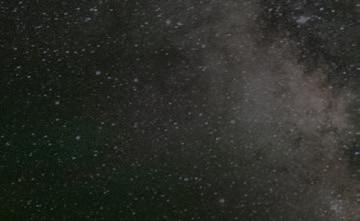


















Exploration has brought humans to our planet’s greatest heights and deepest depths, pushing upon the boundaries between the known and unknown. It has taught us elusive lessons about our world and ourselves that we would never have learned otherwise. At the same time, exploration brings us face to face with dynamic and hard to resolve ethical questions about the impact of exploration on human and non-human communities.
Join College of the Atlantic and the National Geographic Society for the 2023 Summer Institute as we gather some of the greatest living explorers, writers, artists, and thinkers to help reimagine exploration.
In conversations with those who have ventured into extreme landscapes, the deep sea, the human mind, and the world of art and other disciplines, we will examine exploration in the broadest sense. Ultimately, we hope to recast an approach to exploration that is rooted in inclusivity and reciprocity, while also preserving the magnificence and health of our planet and its people. coa.edu/si
 IN COLLABORATION WITH THE NATIONAL GEOGRAPHIC SOCIETY
COLLEGE OF THE ATLANTIC
IN COLLABORATION WITH THE NATIONAL GEOGRAPHIC SOCIETY
COLLEGE OF THE ATLANTIC

